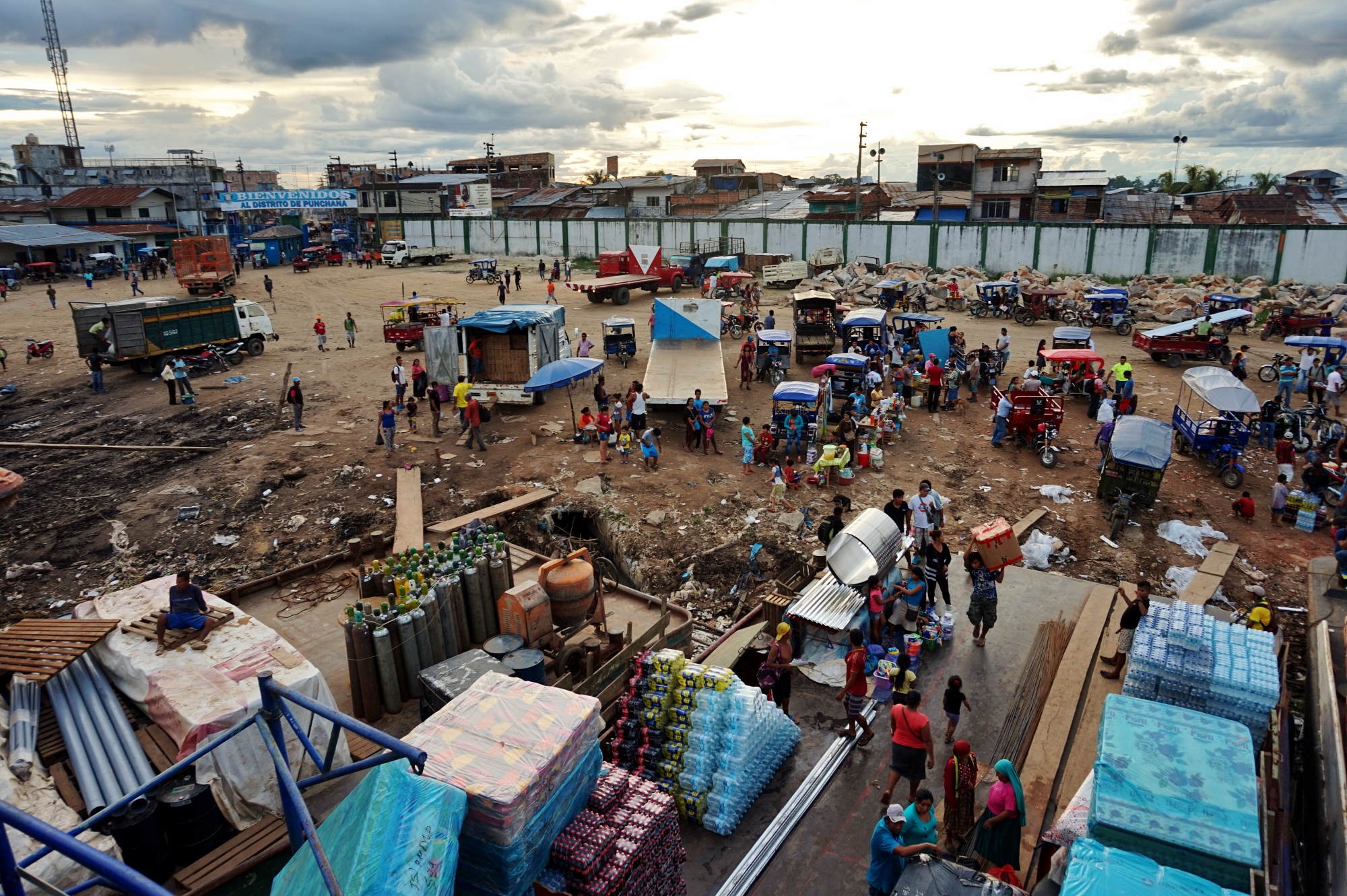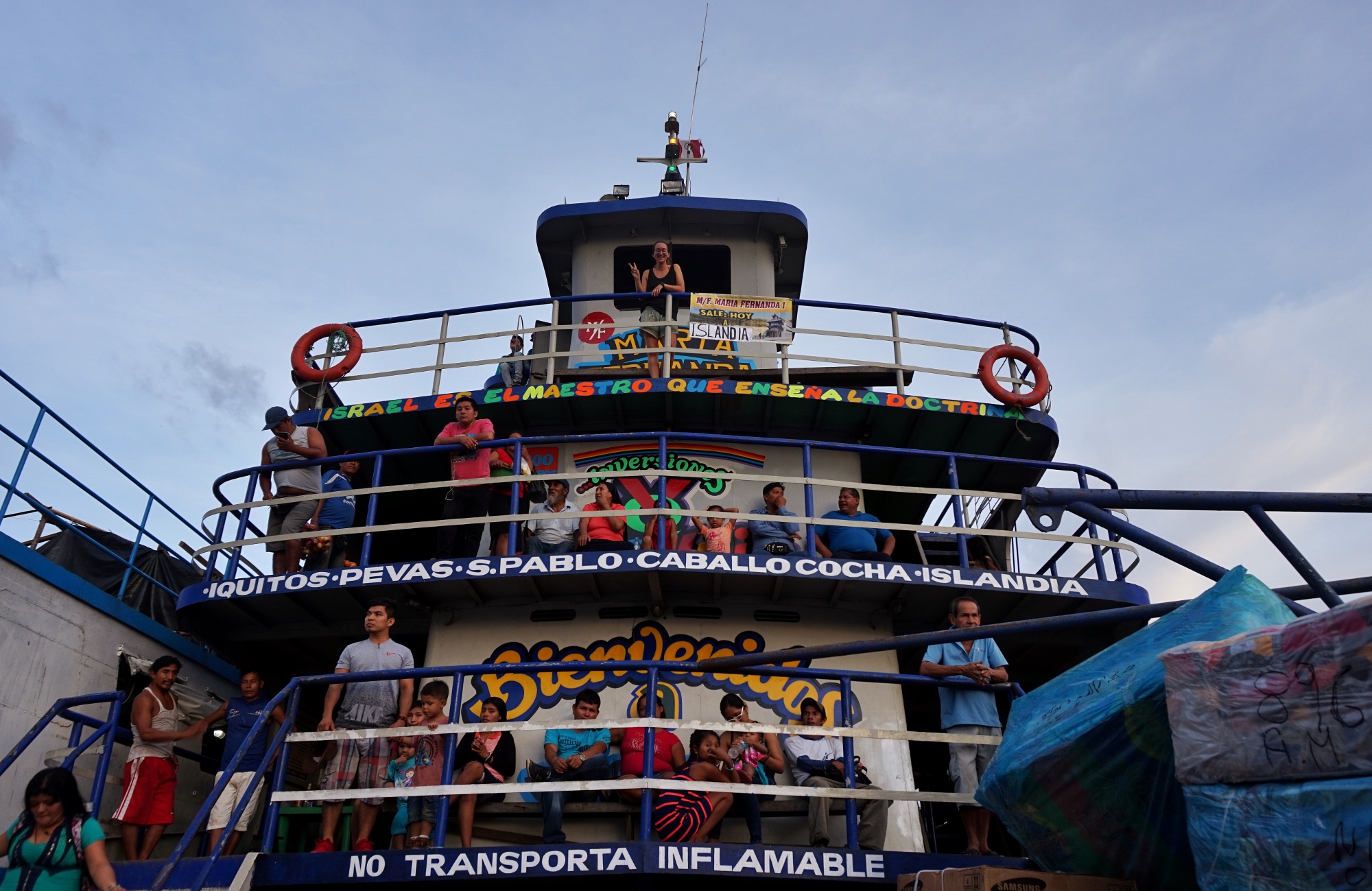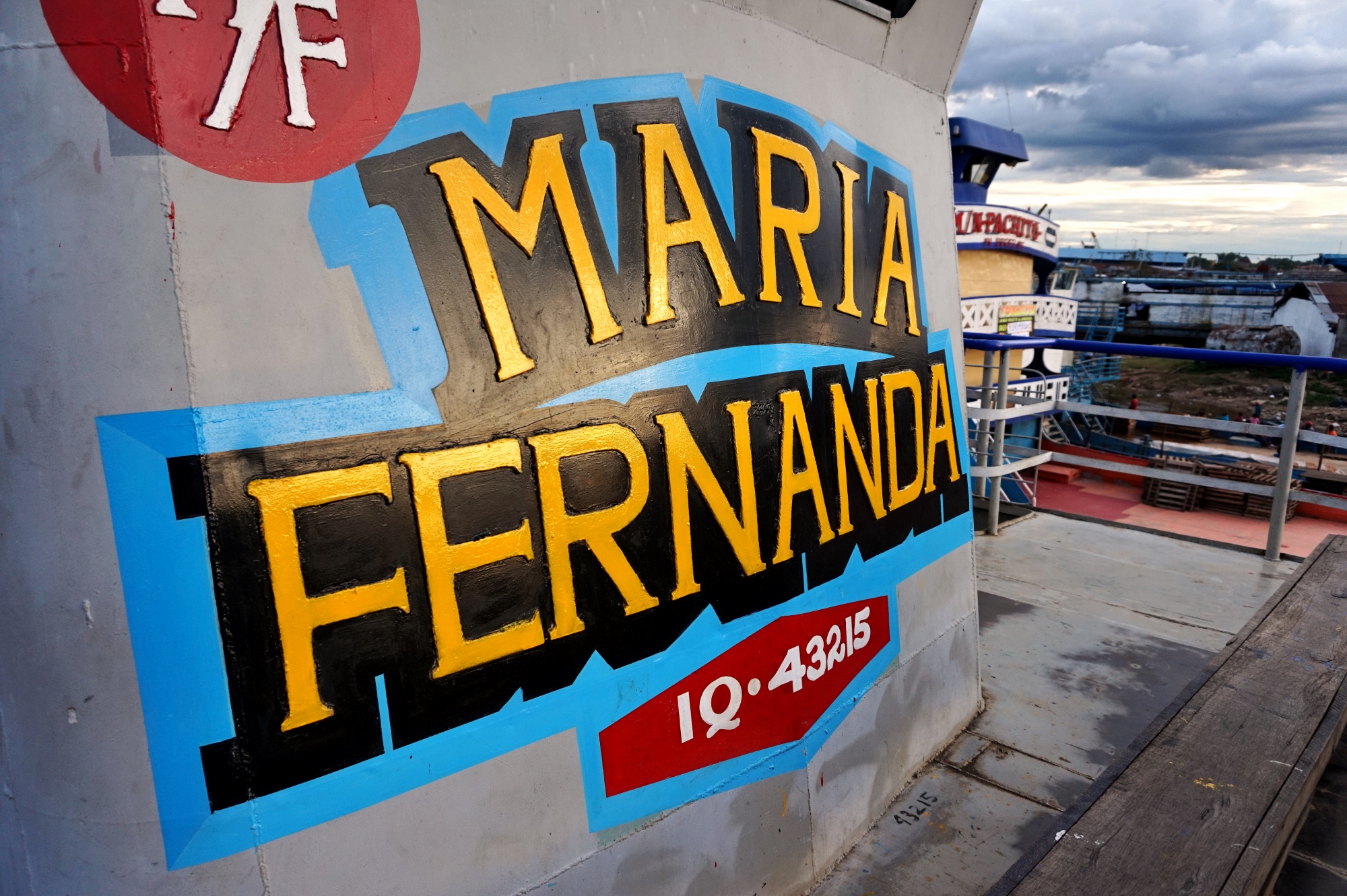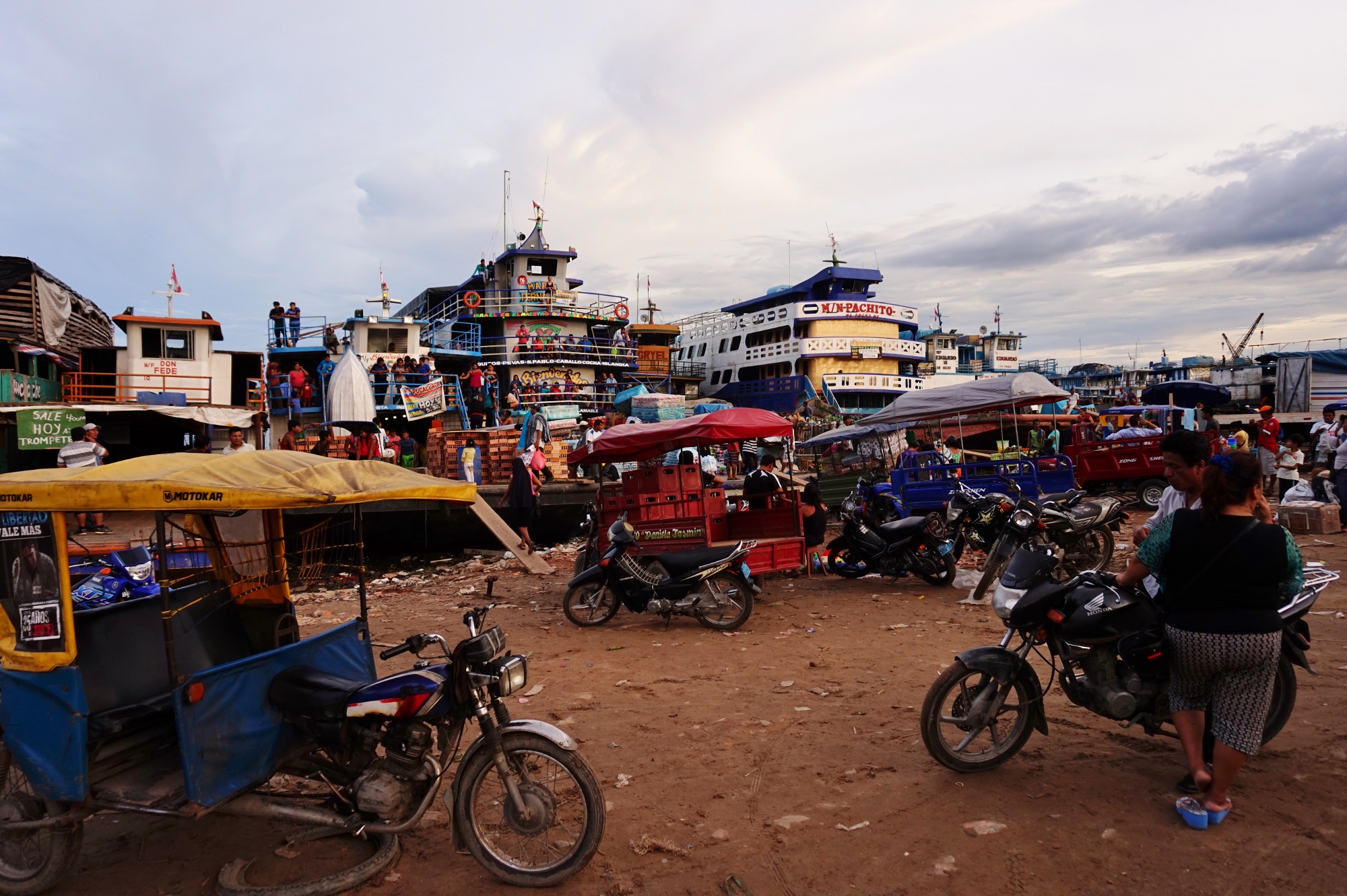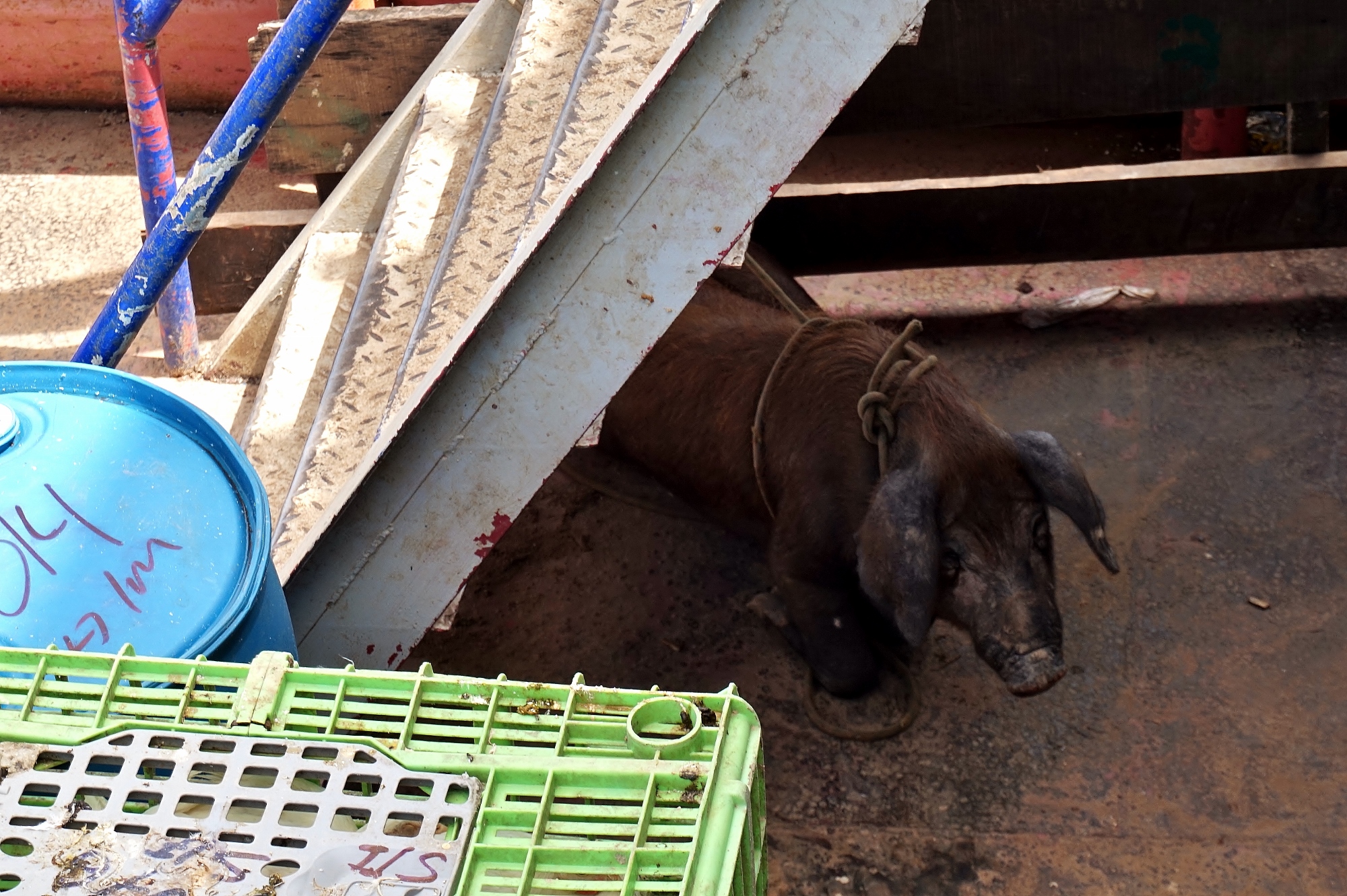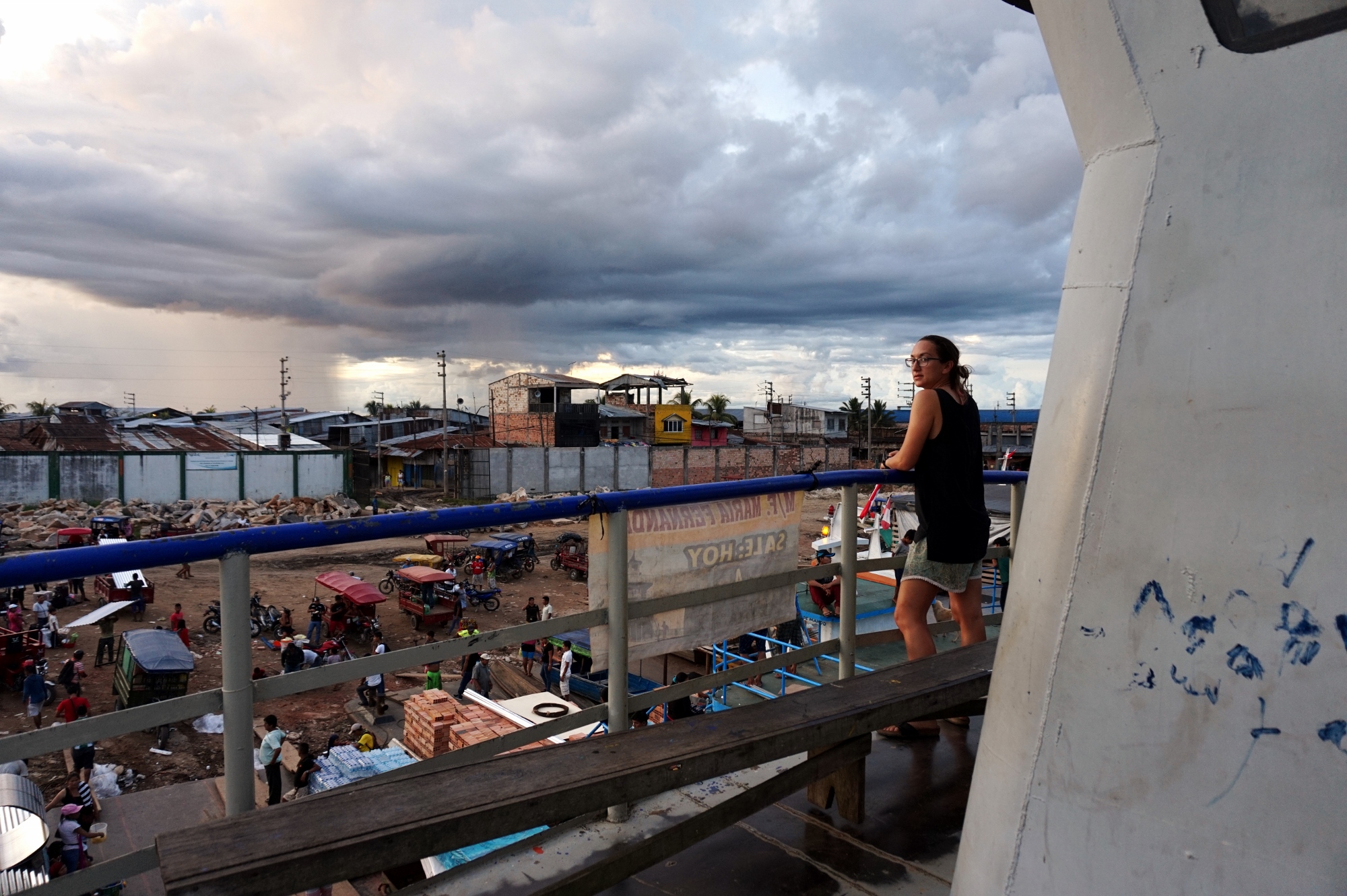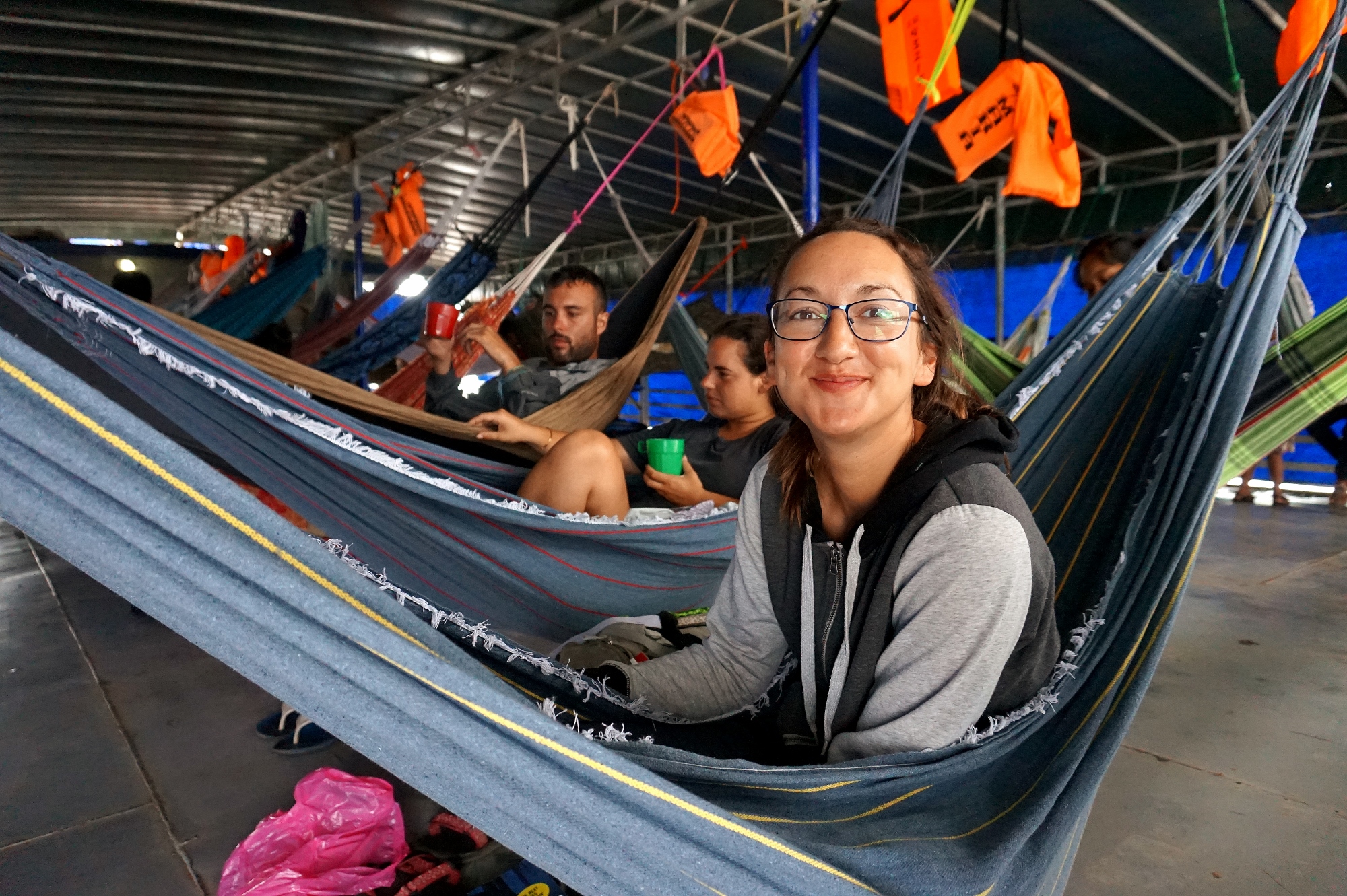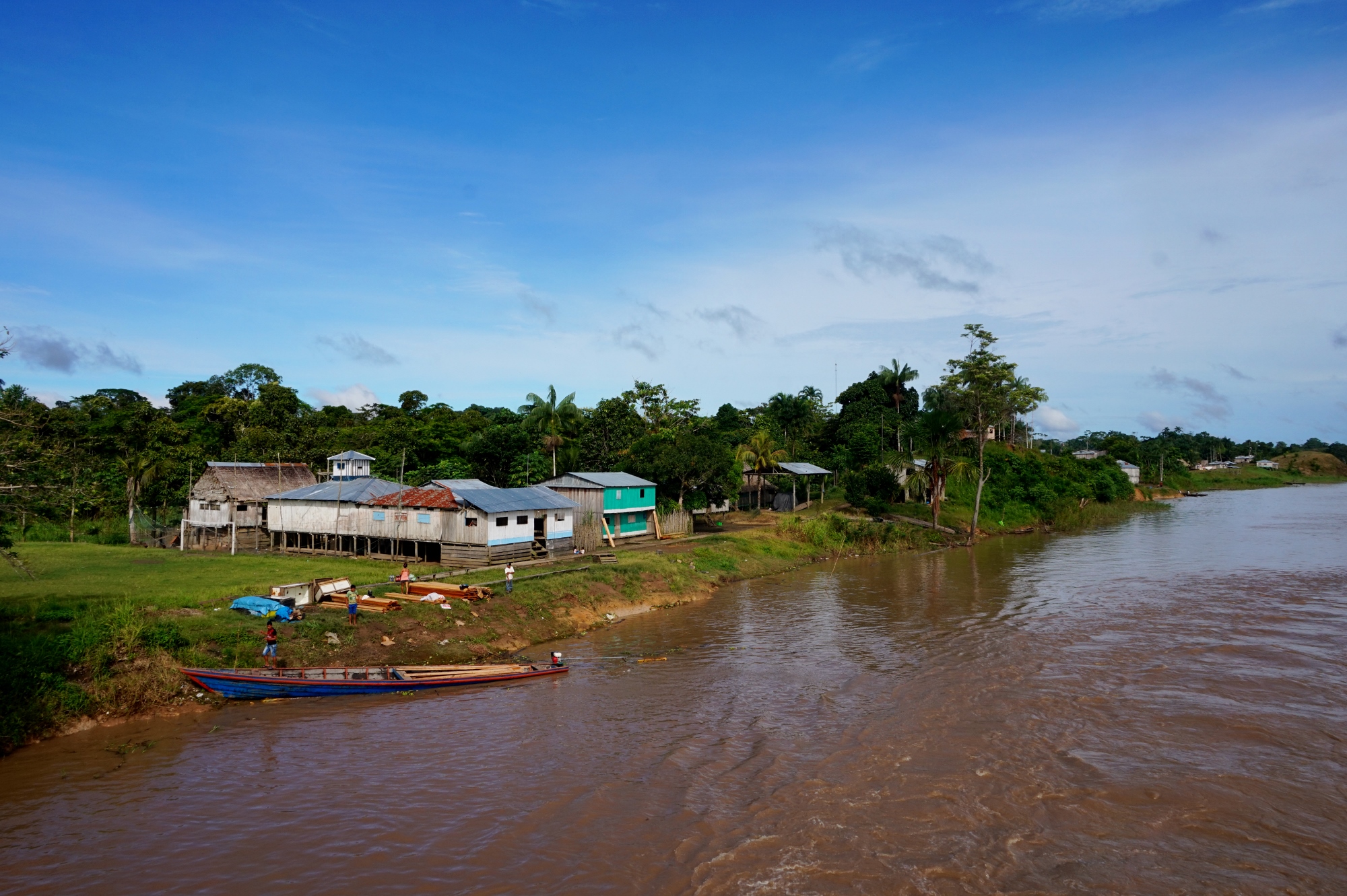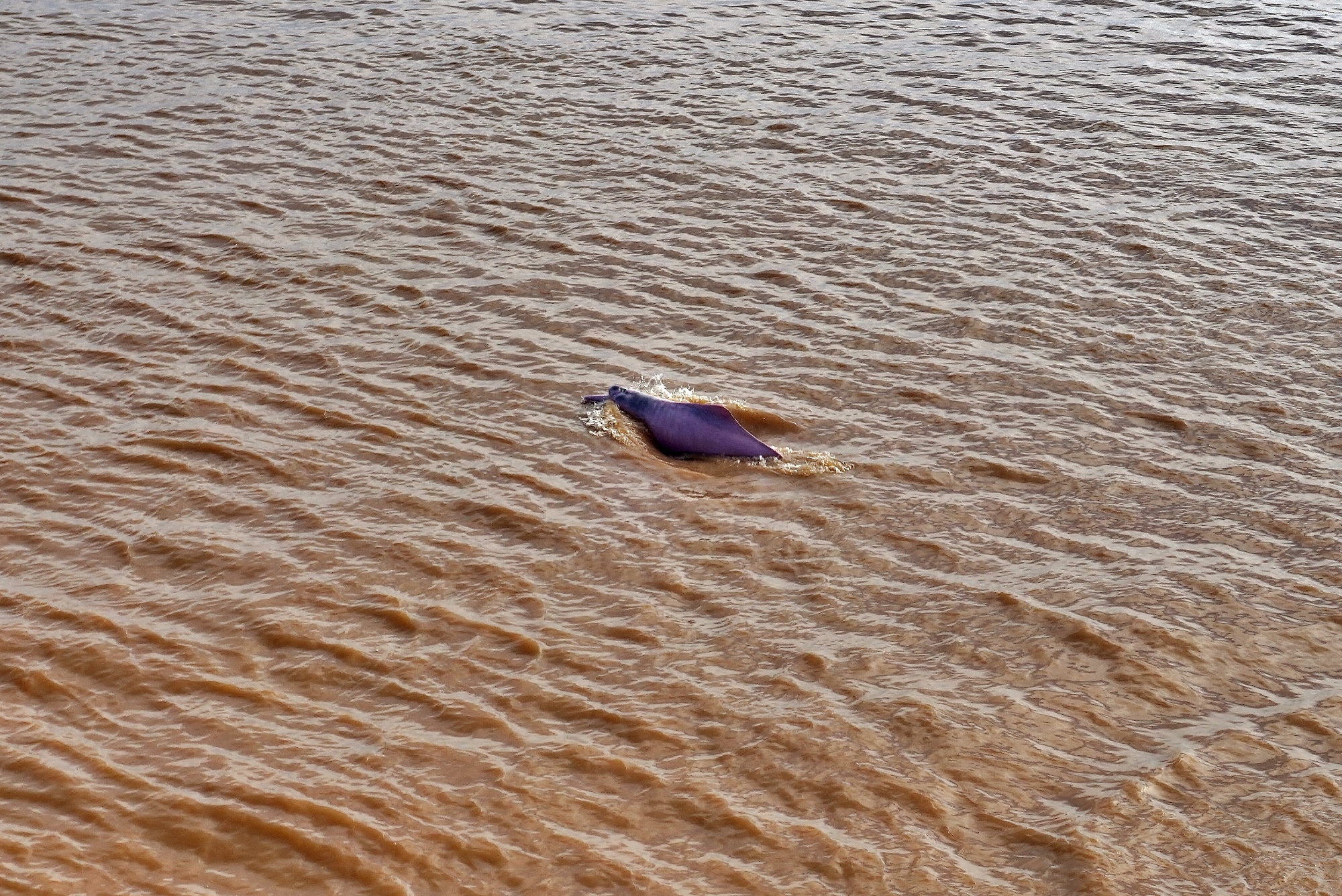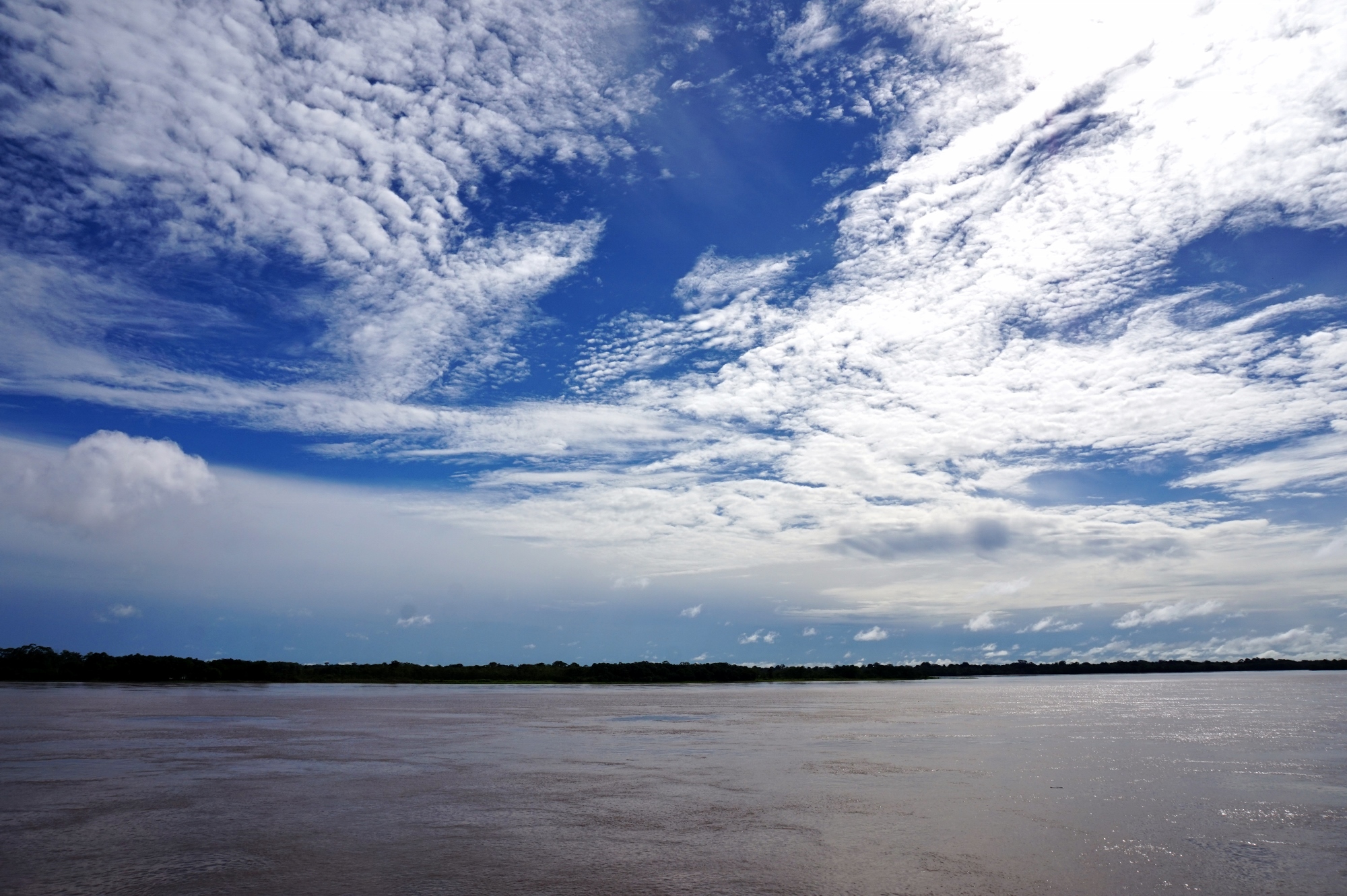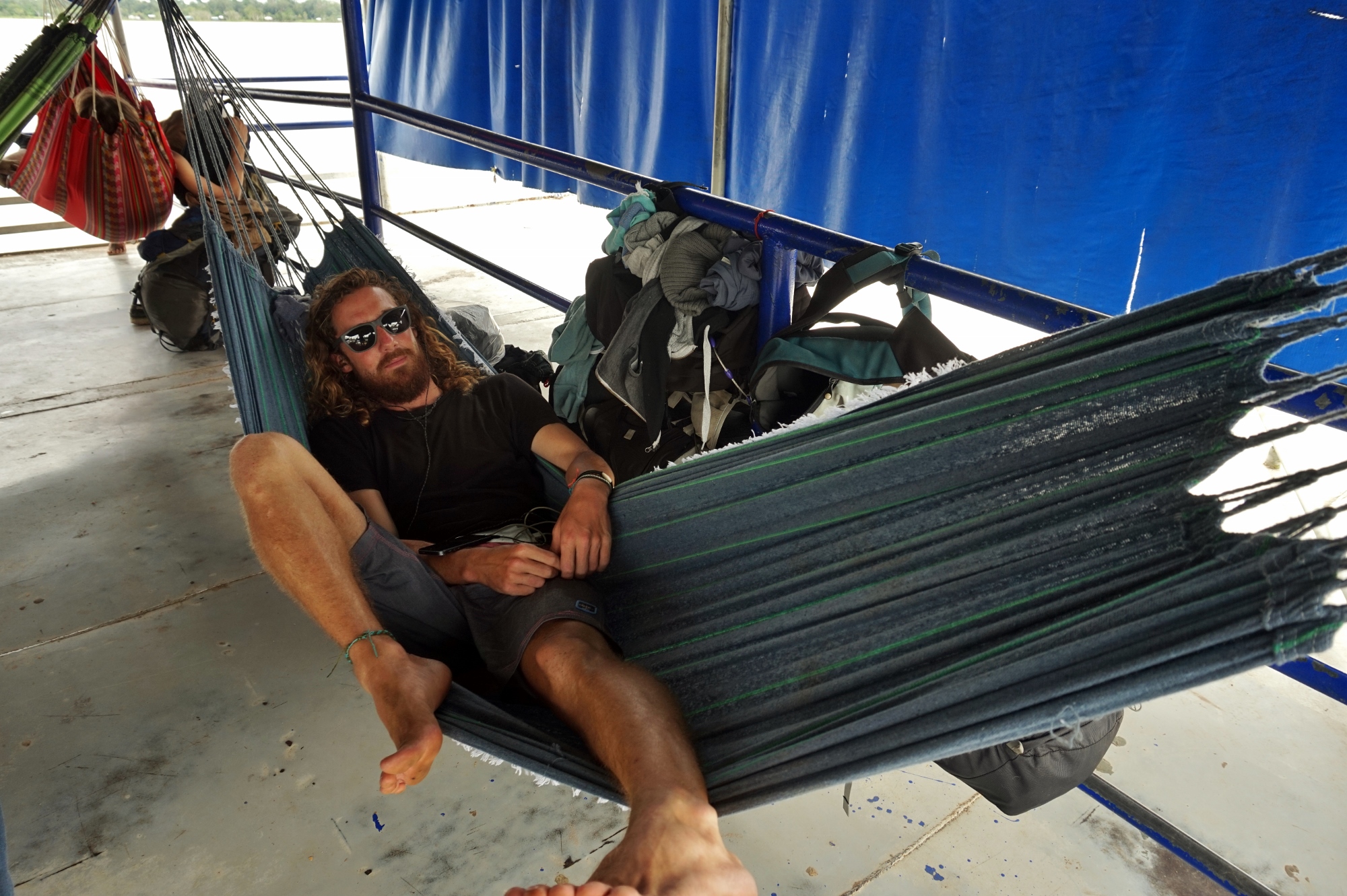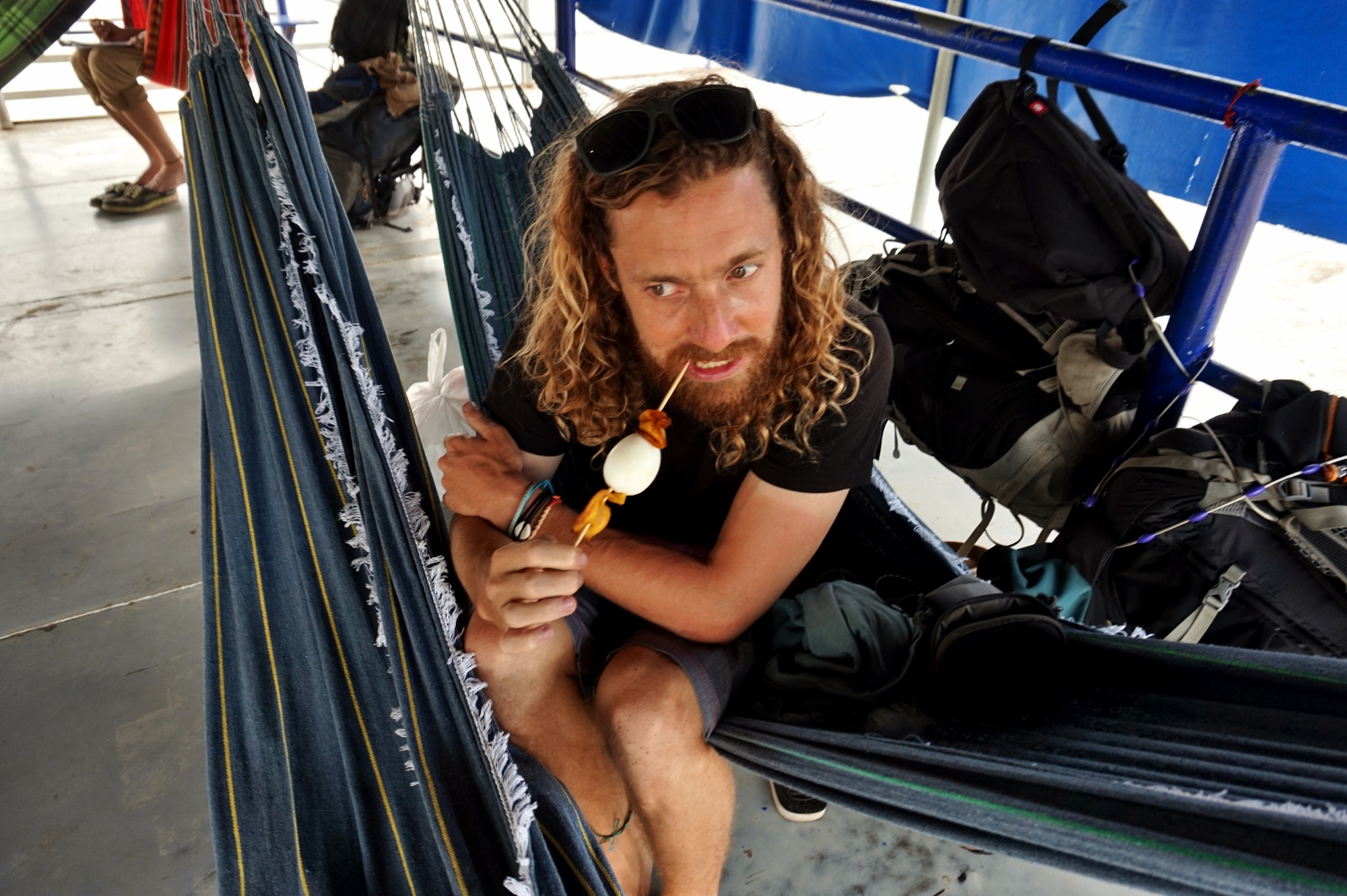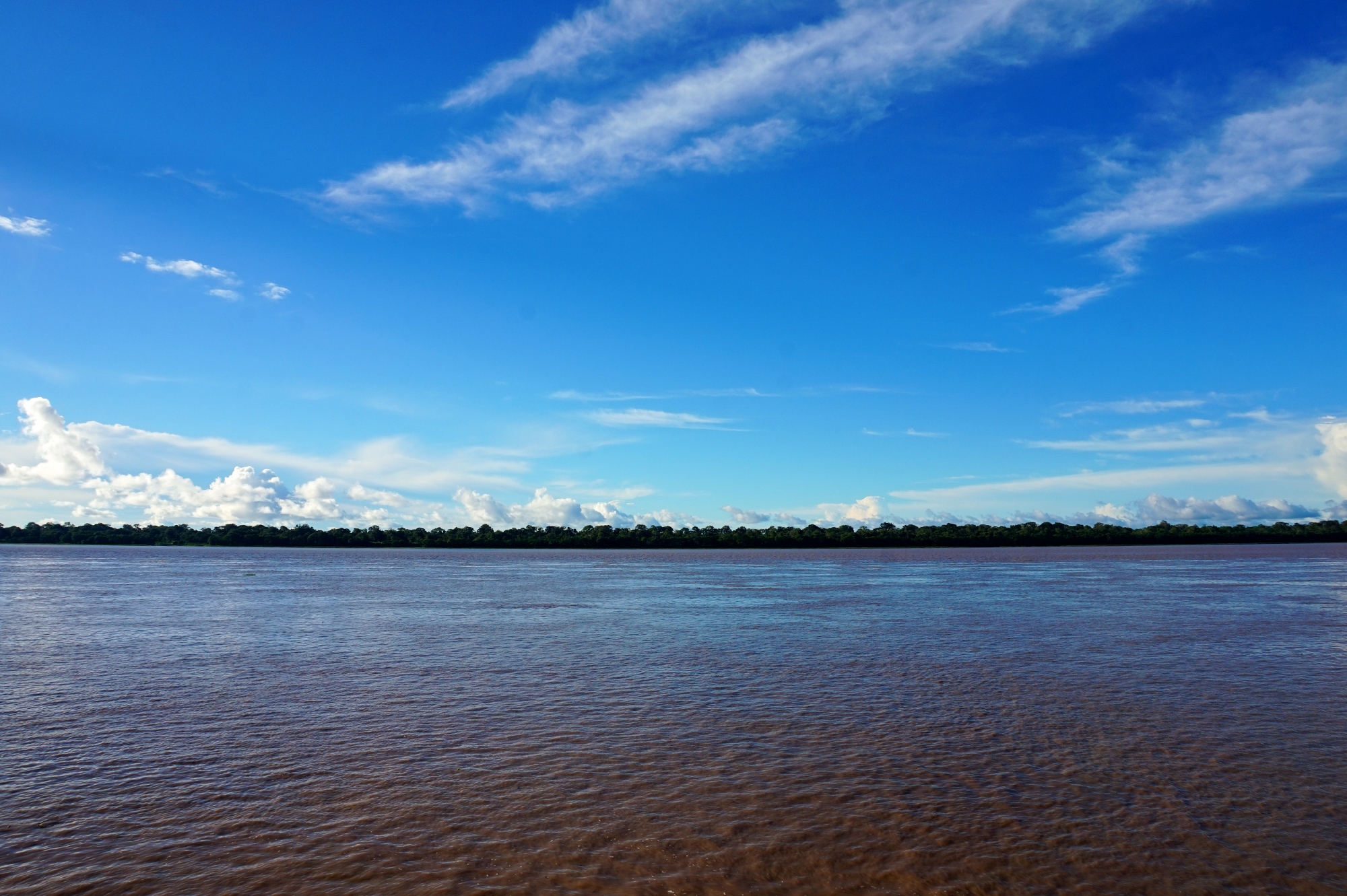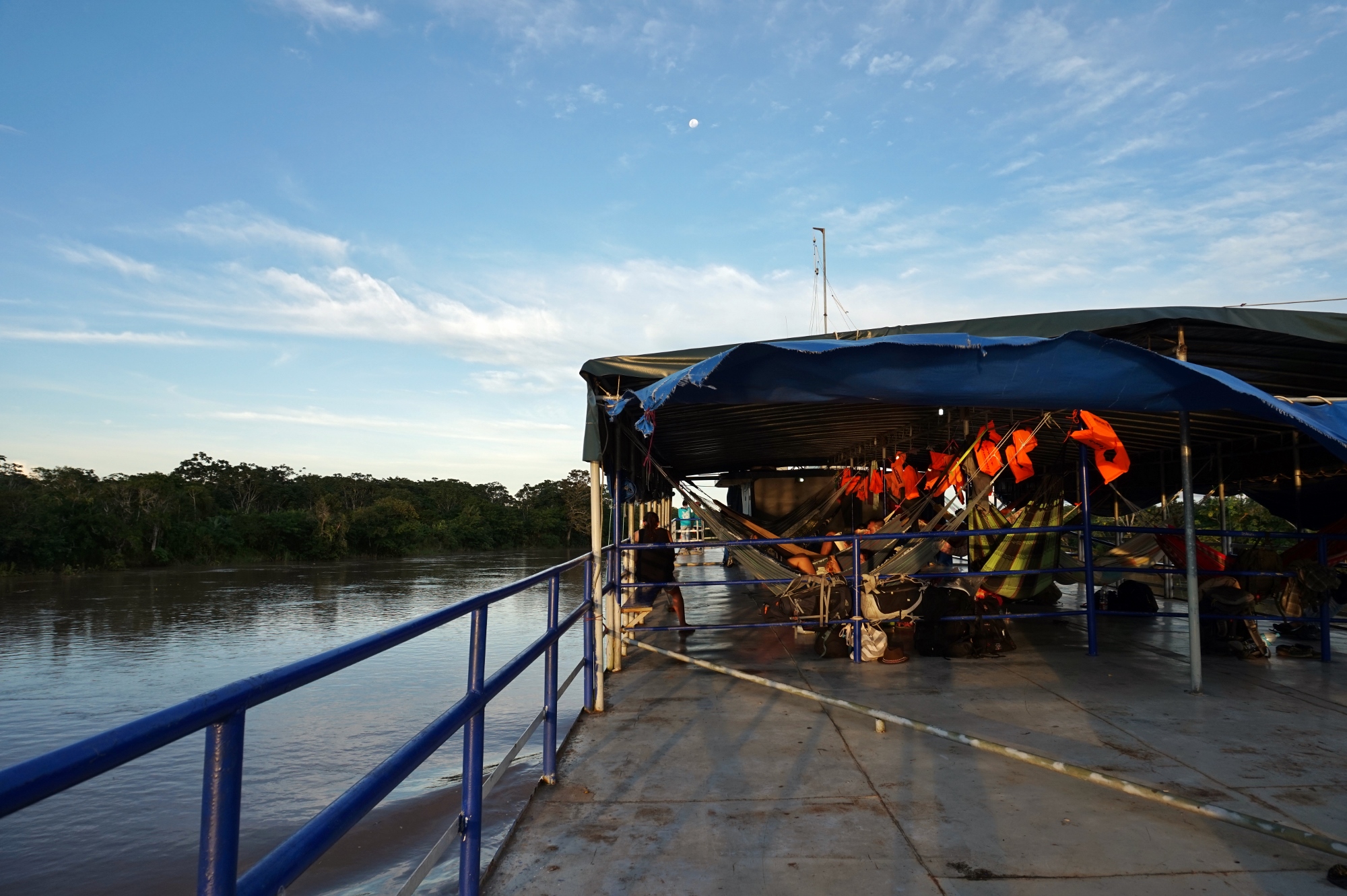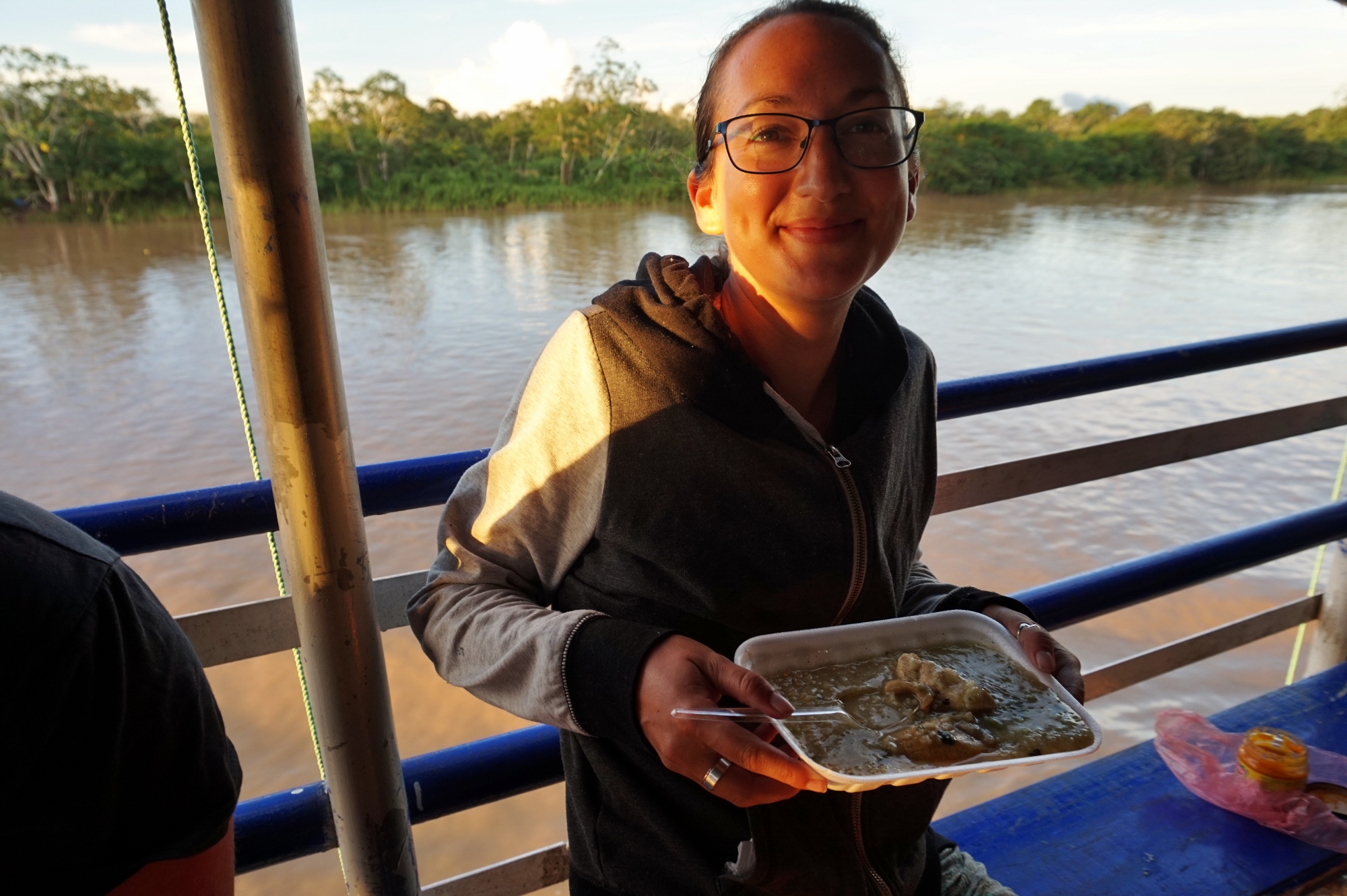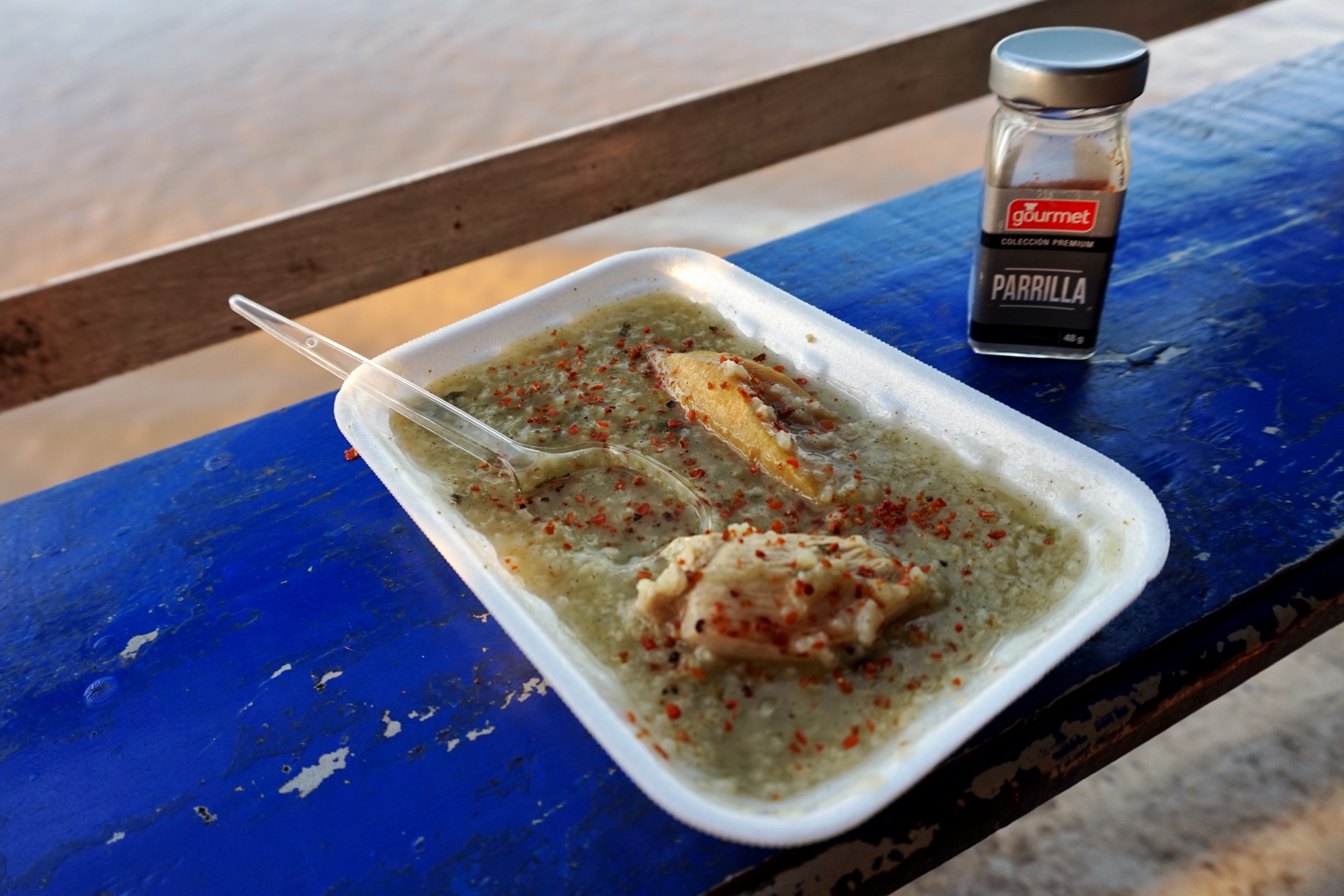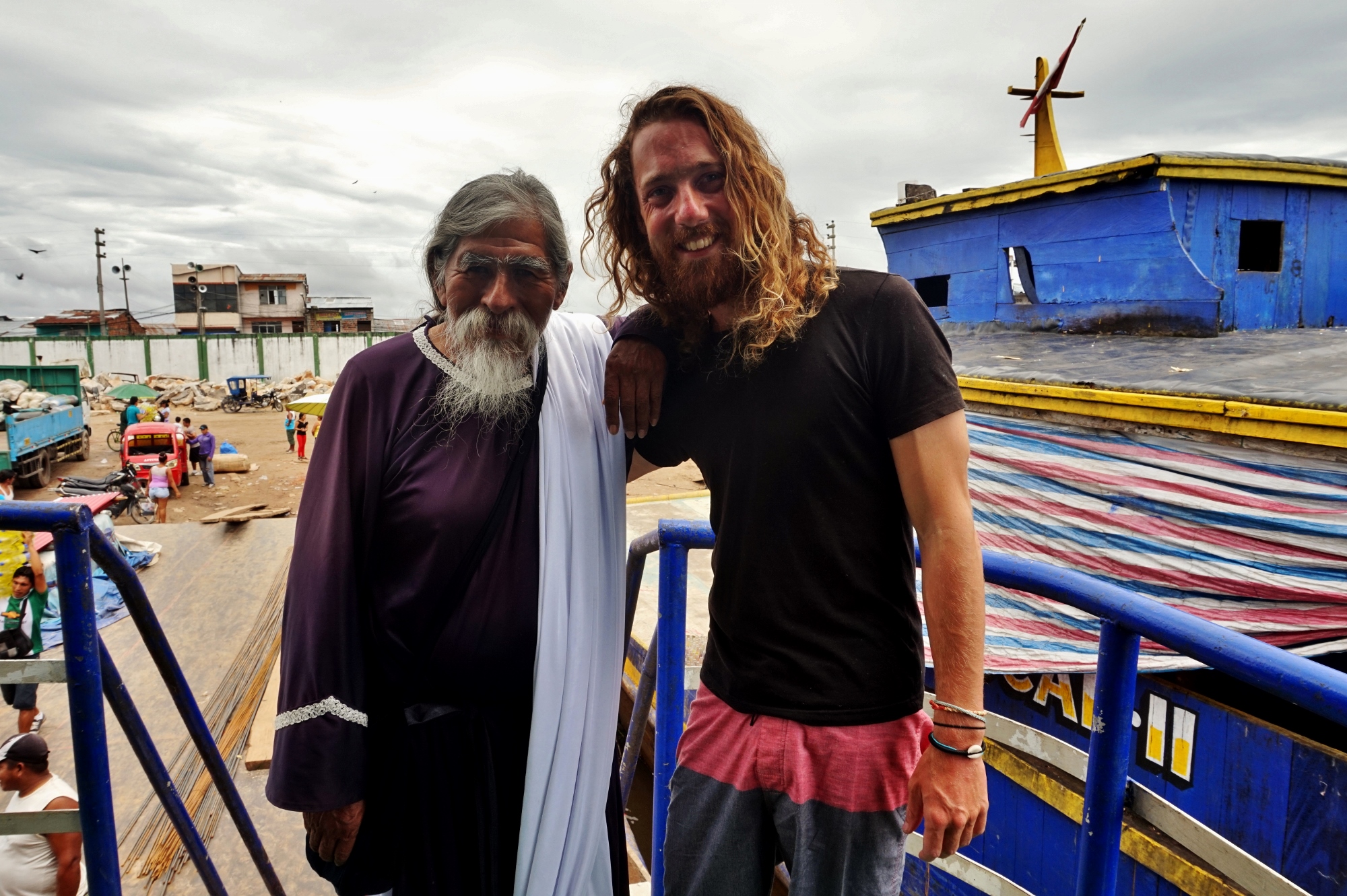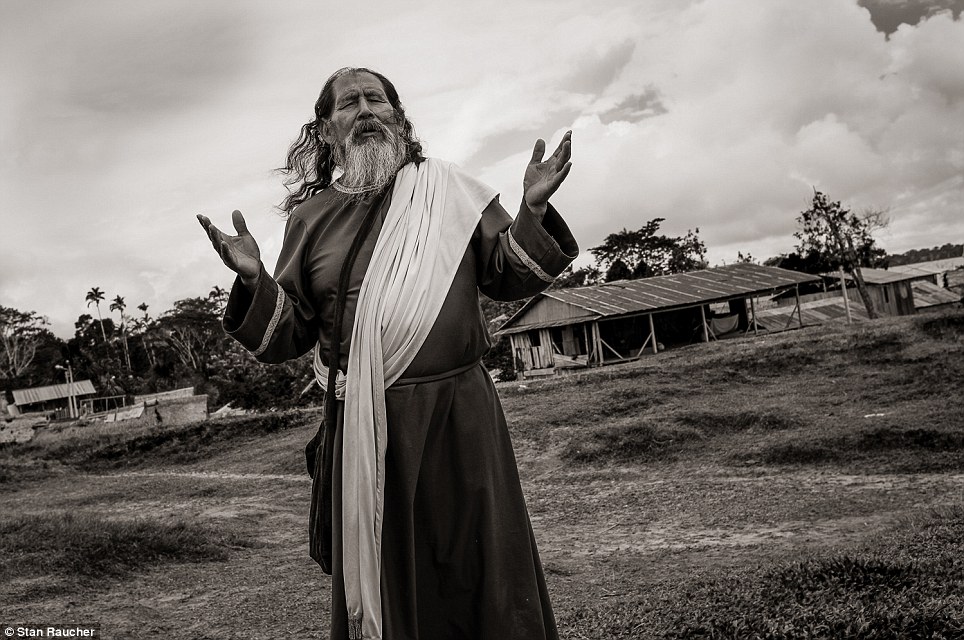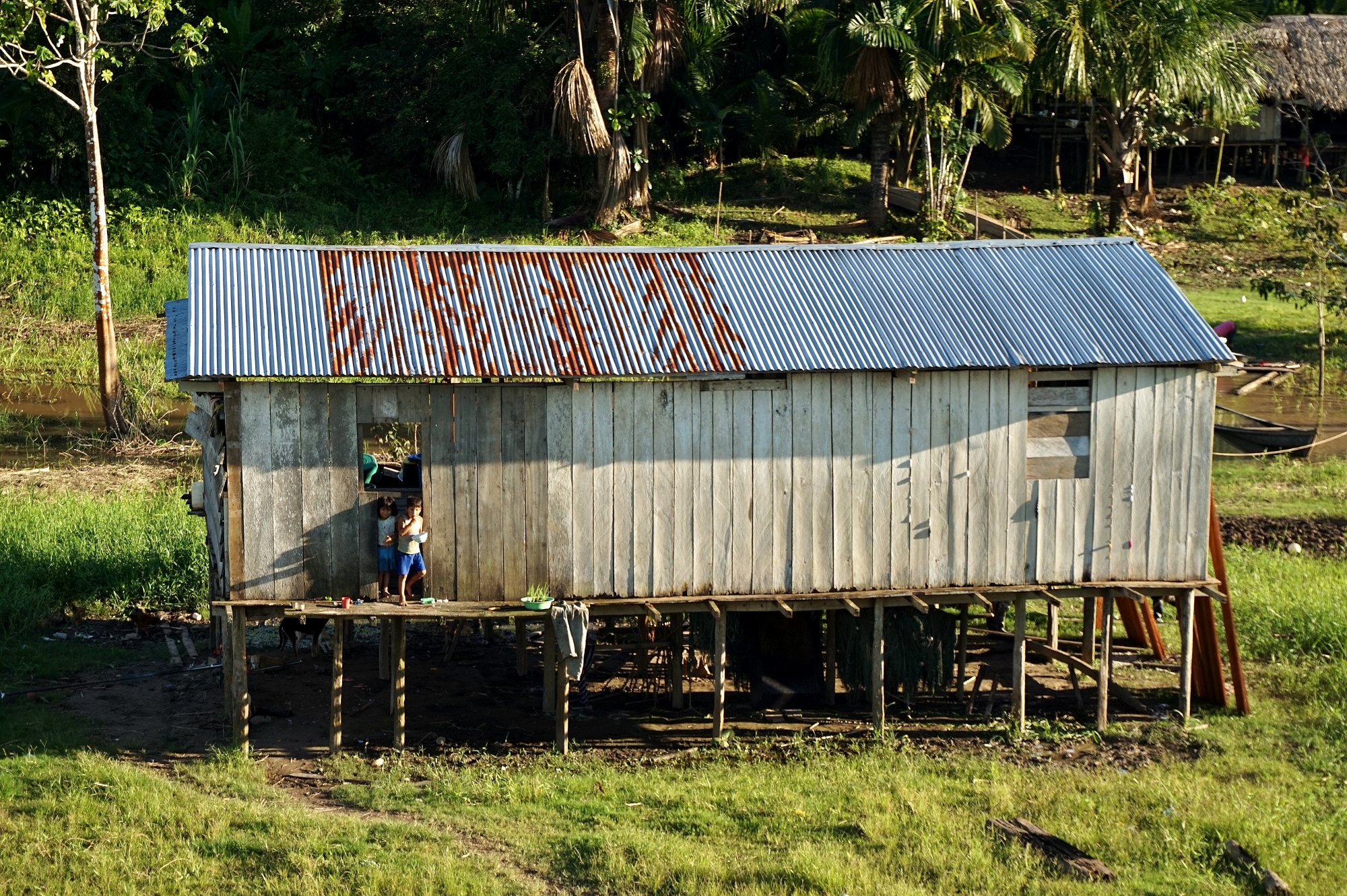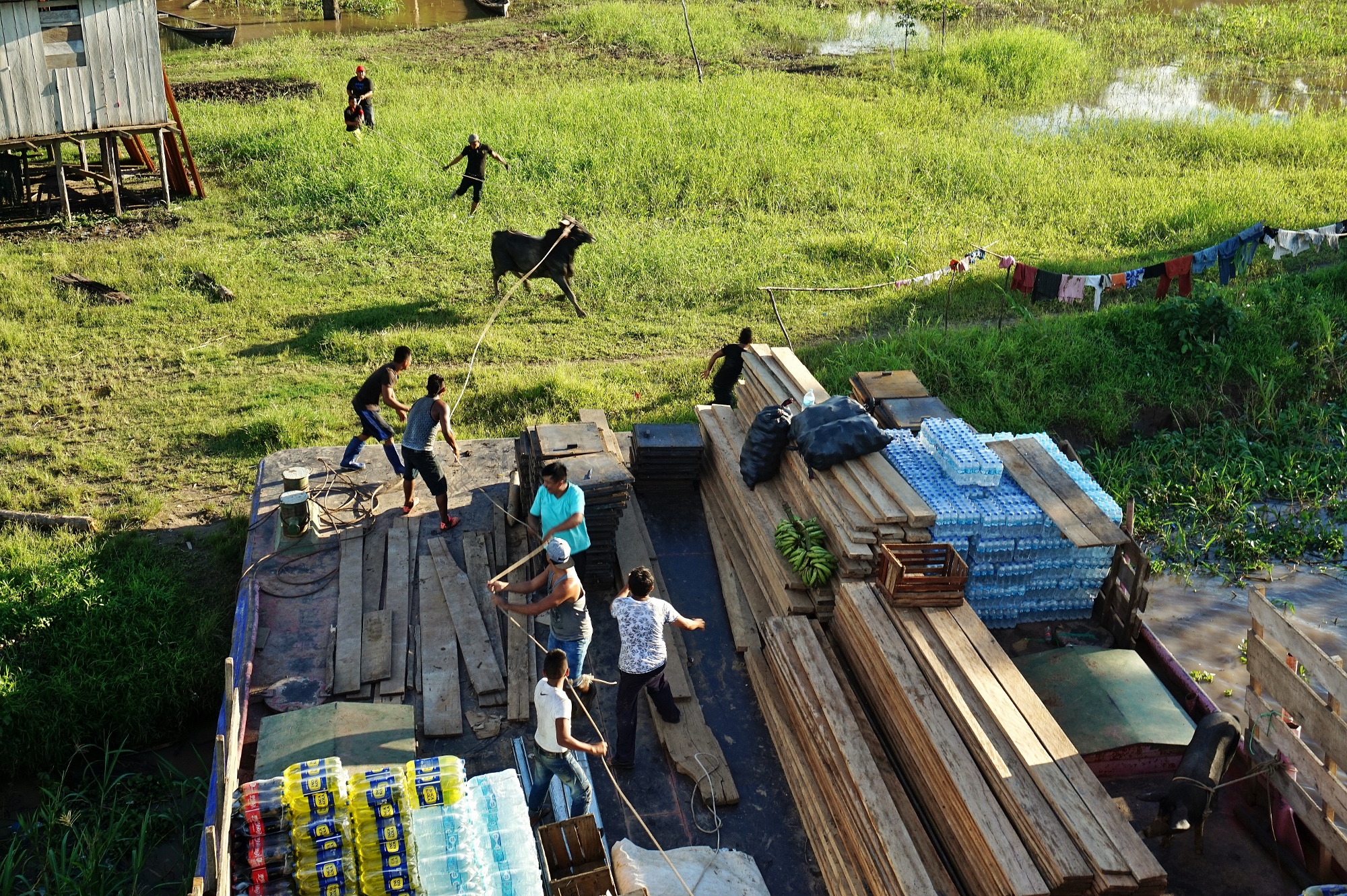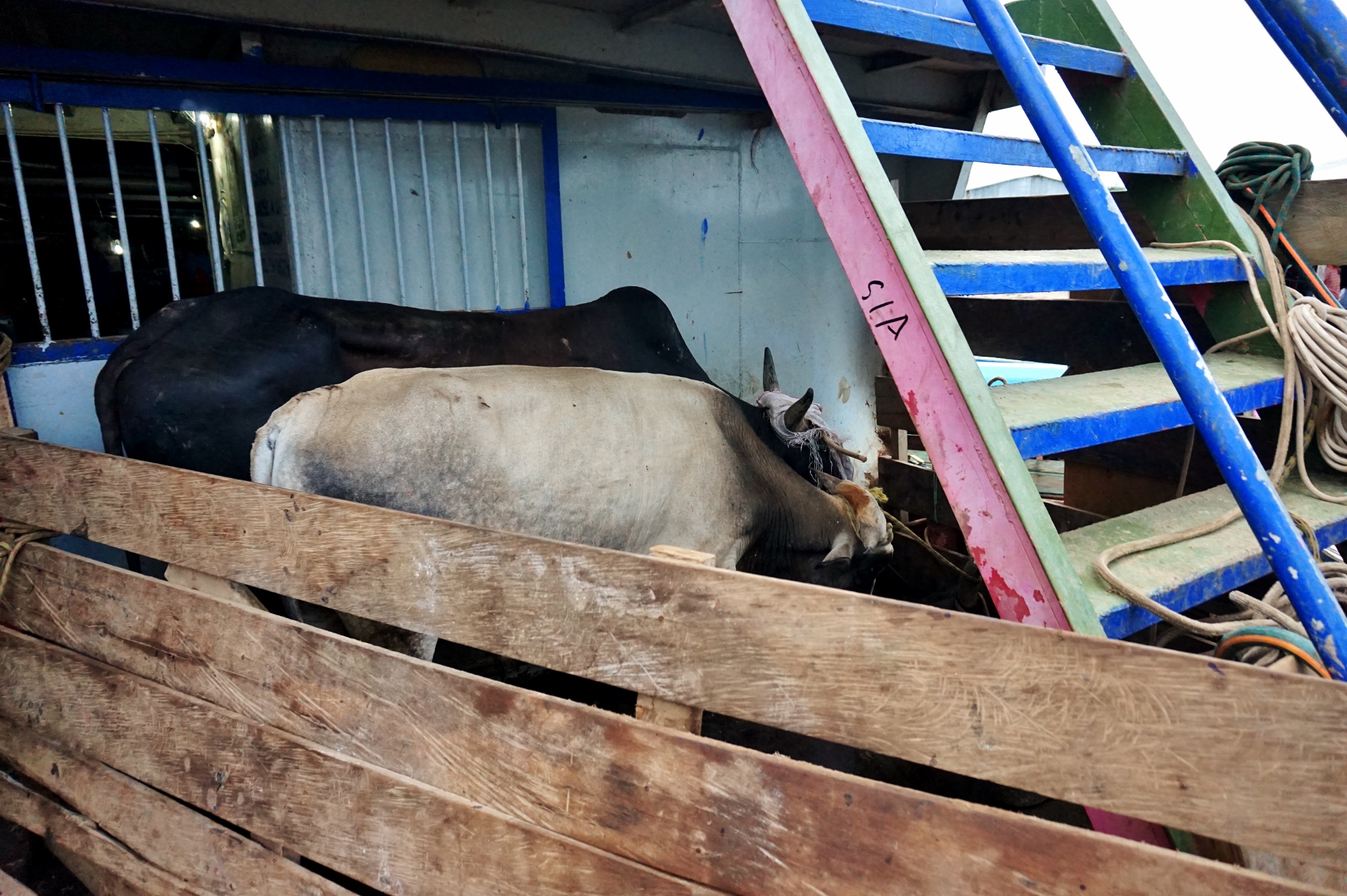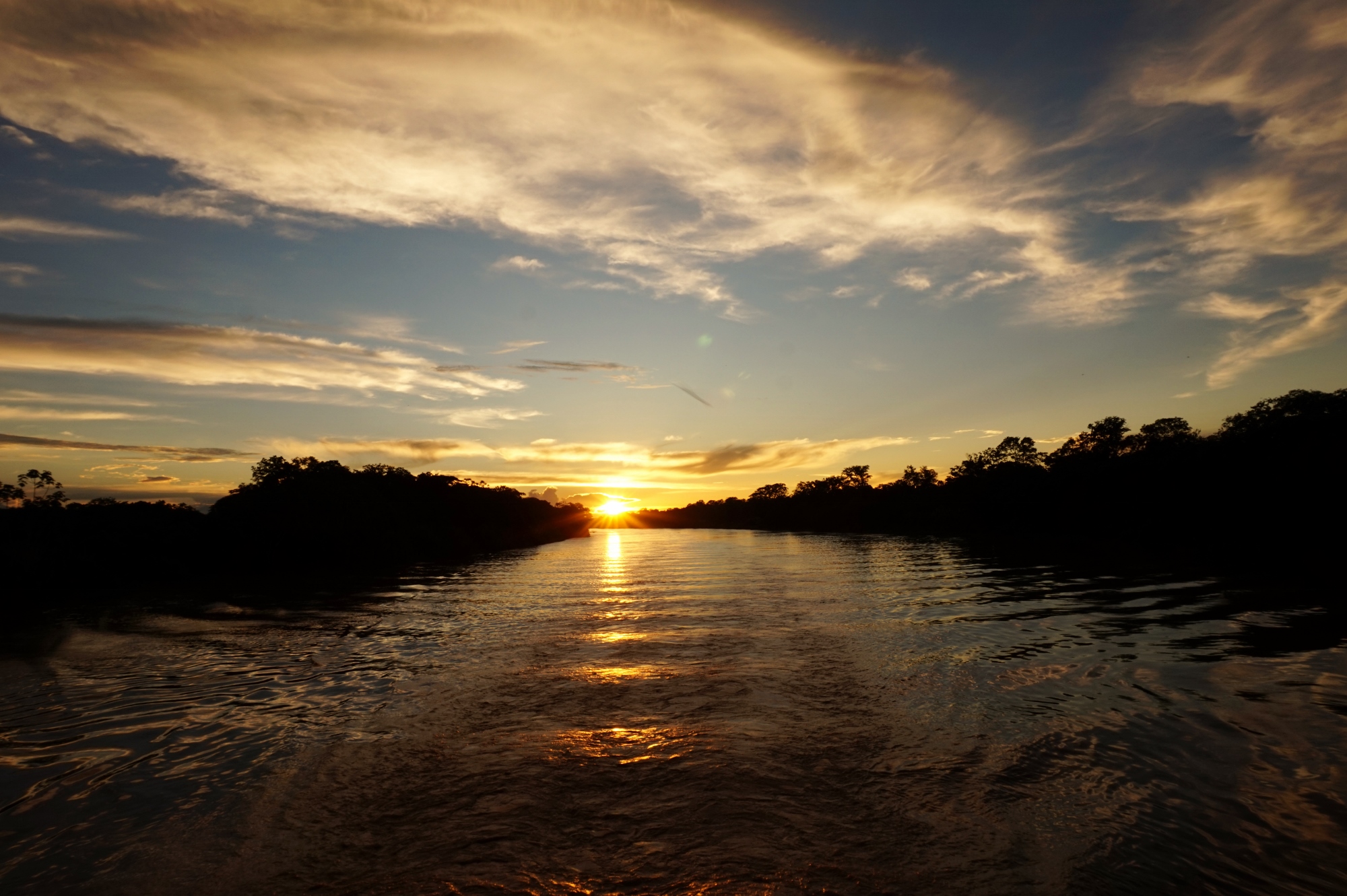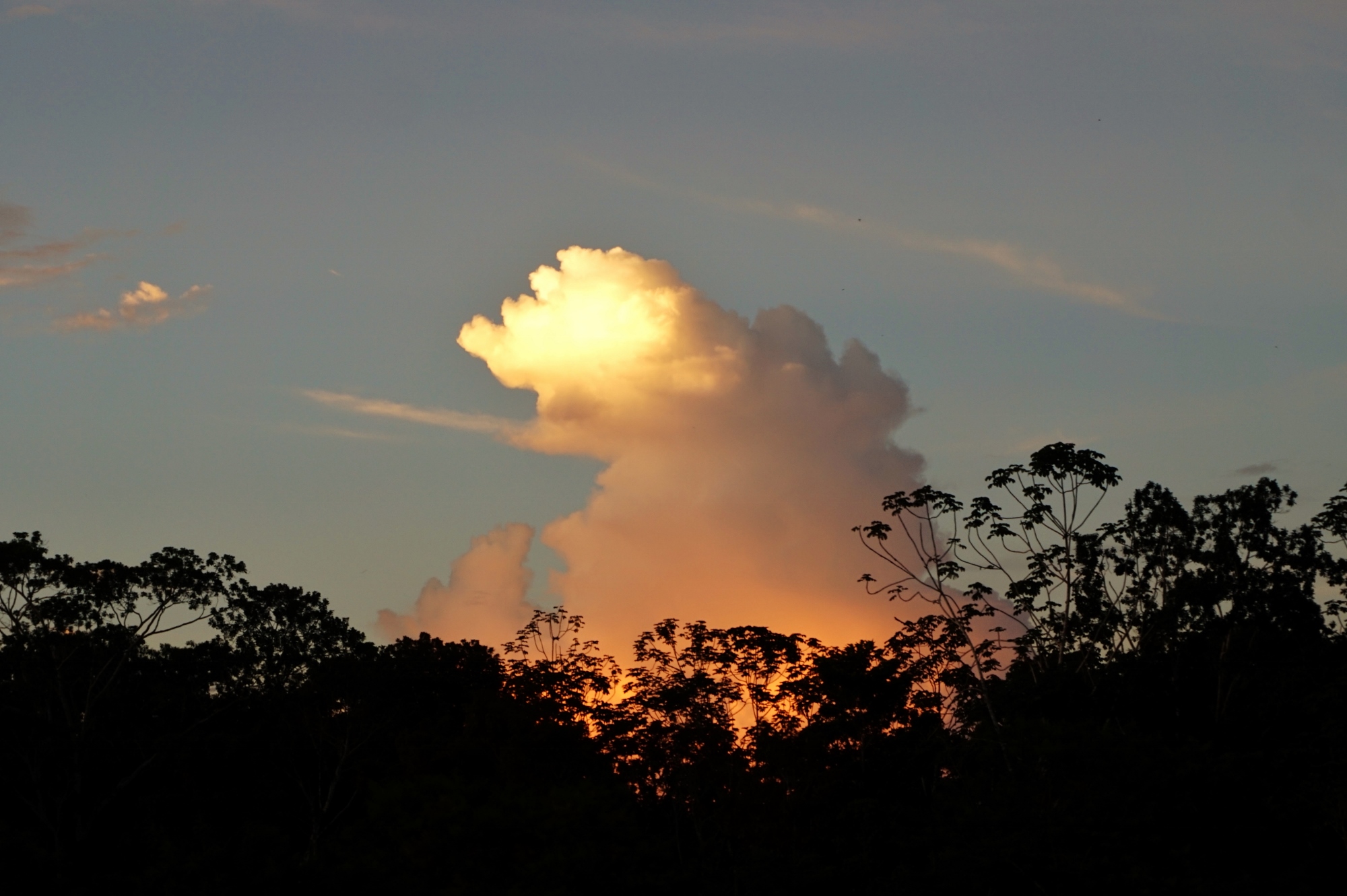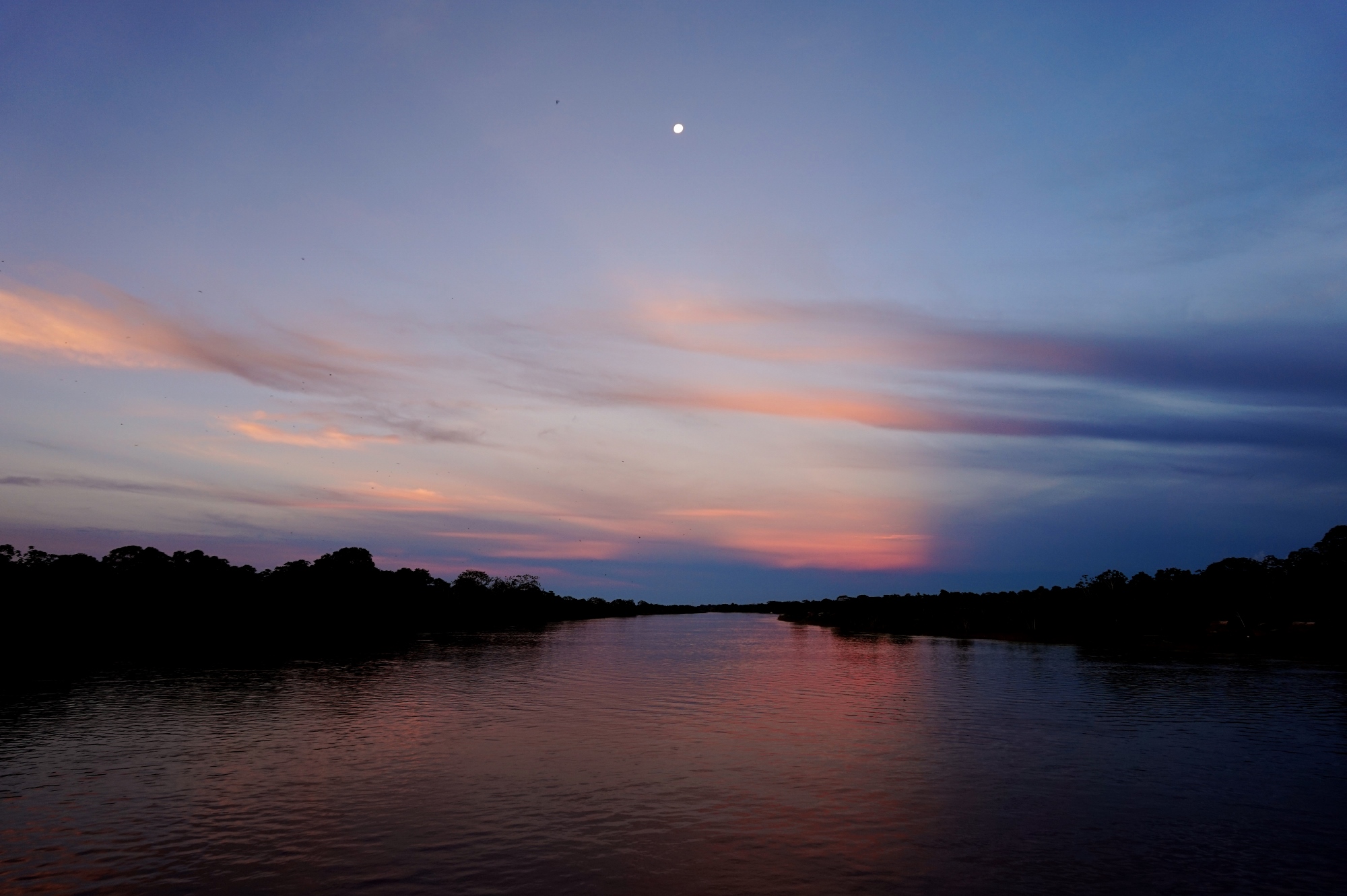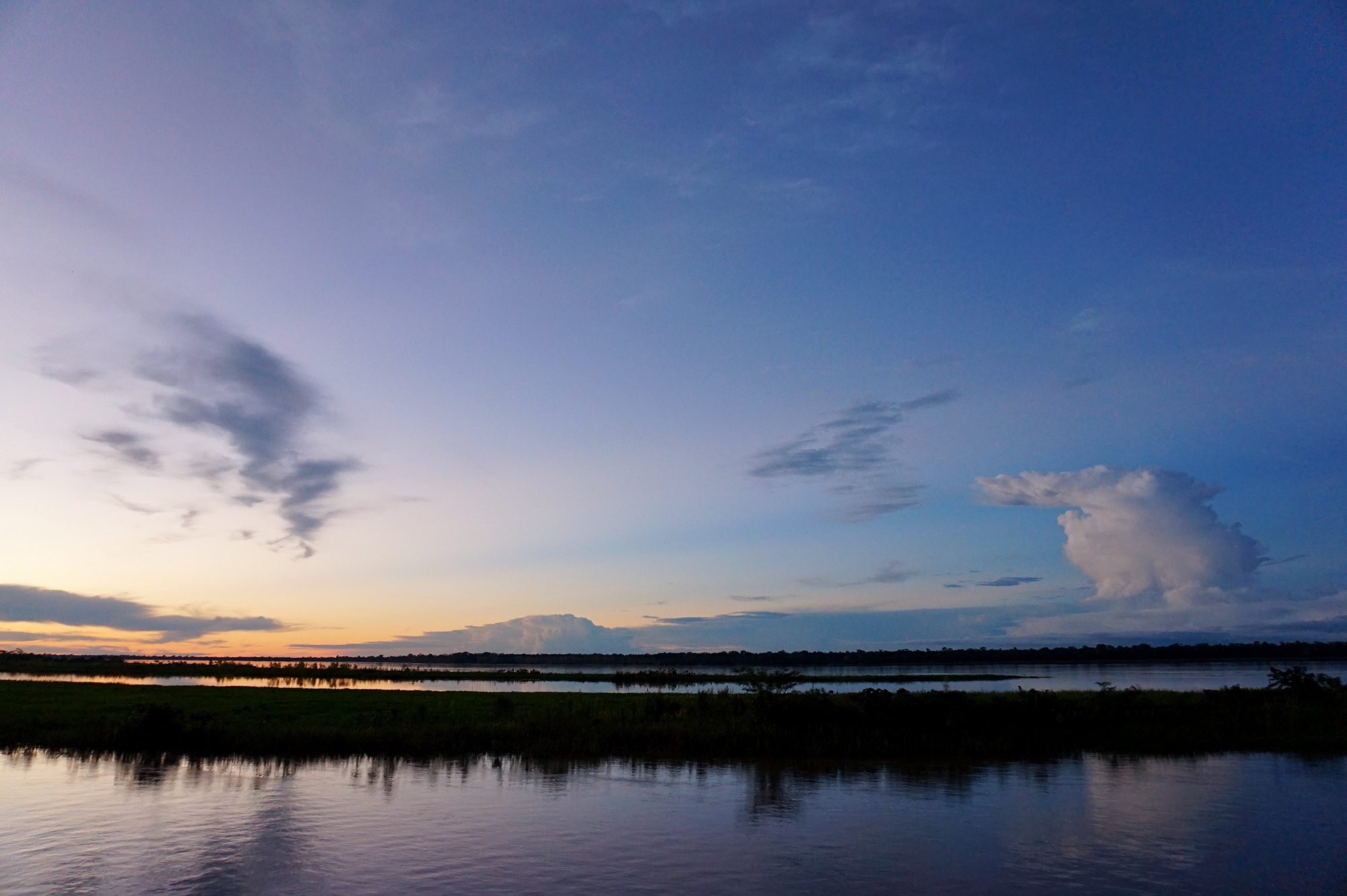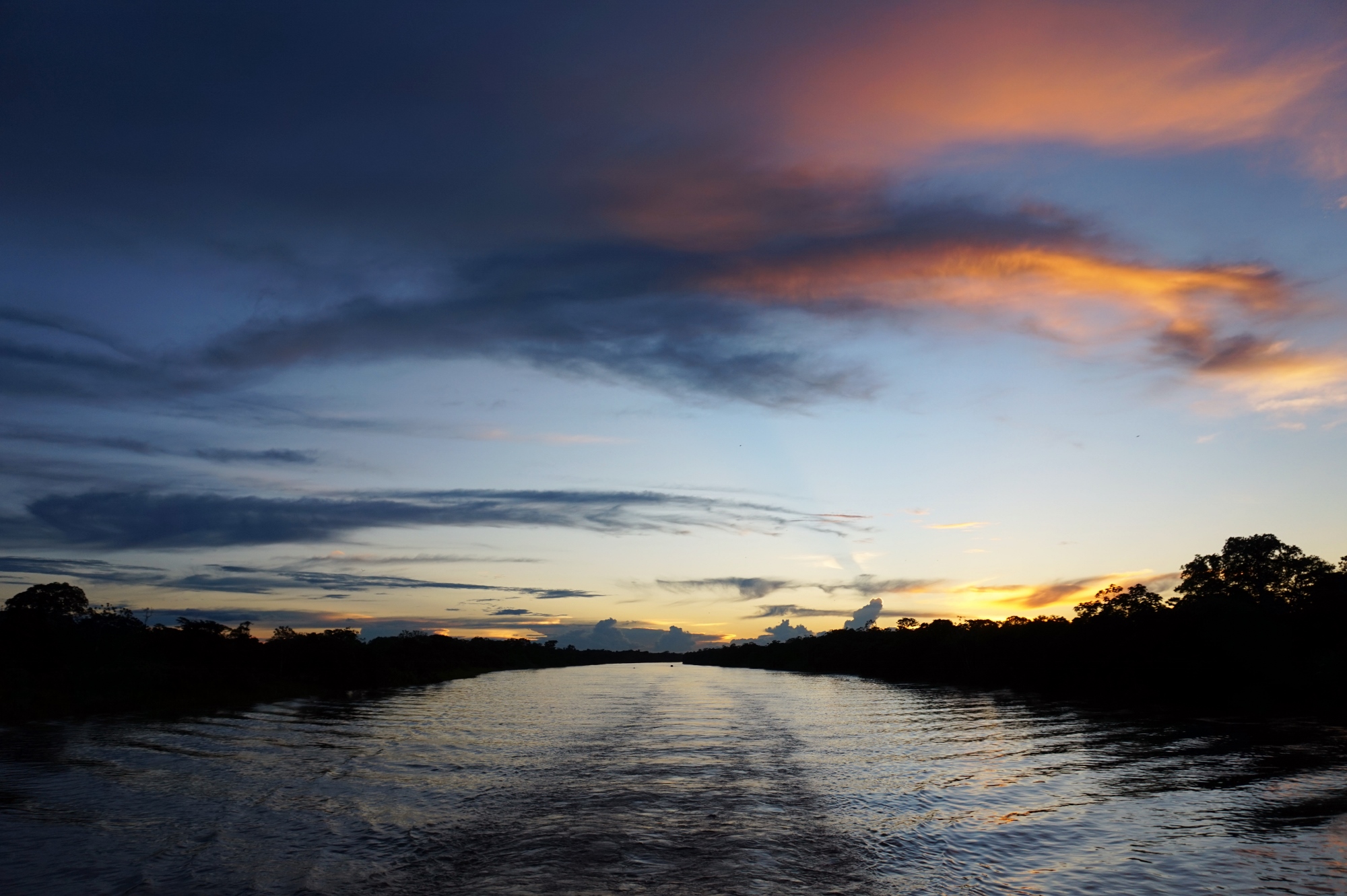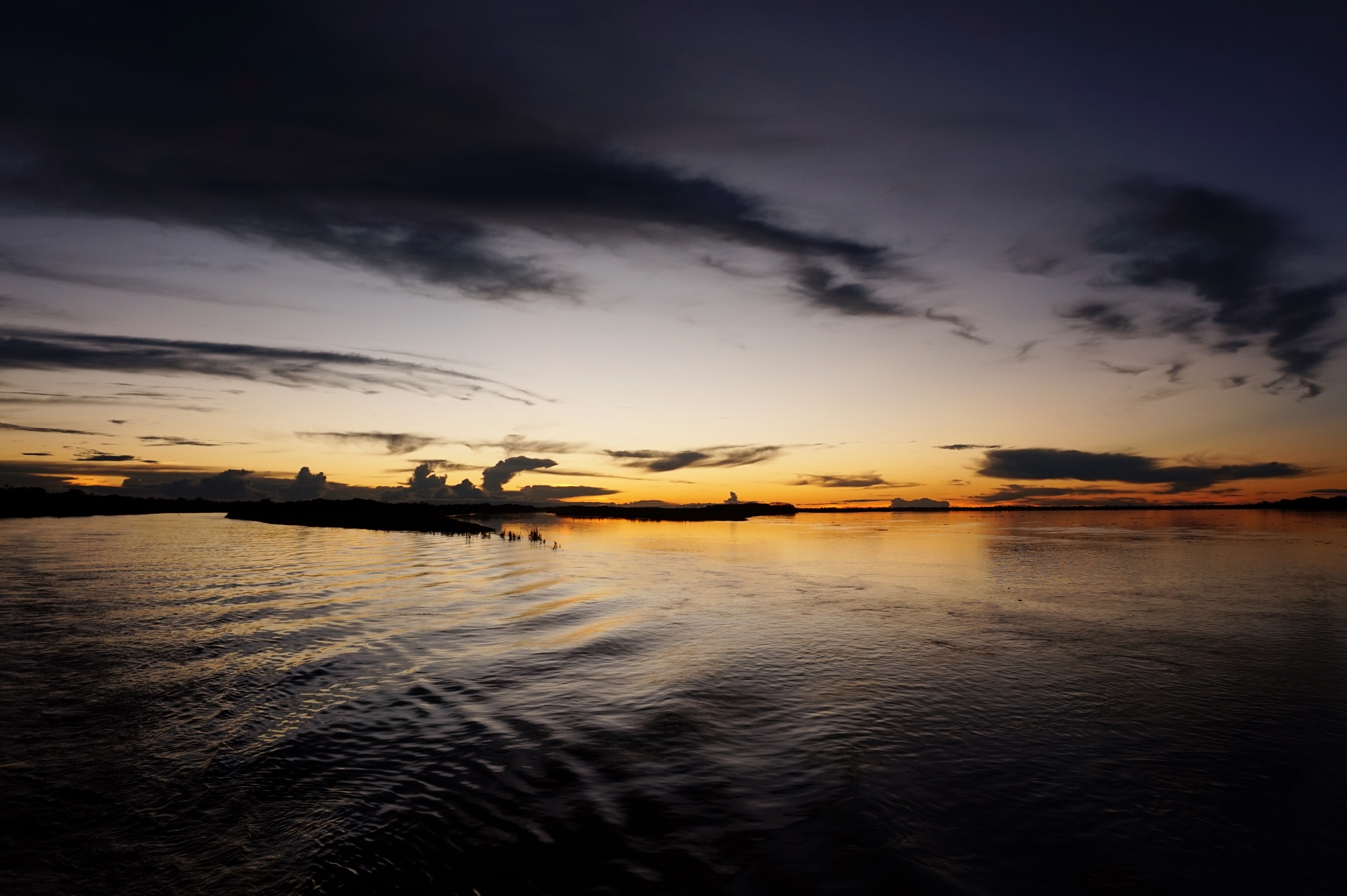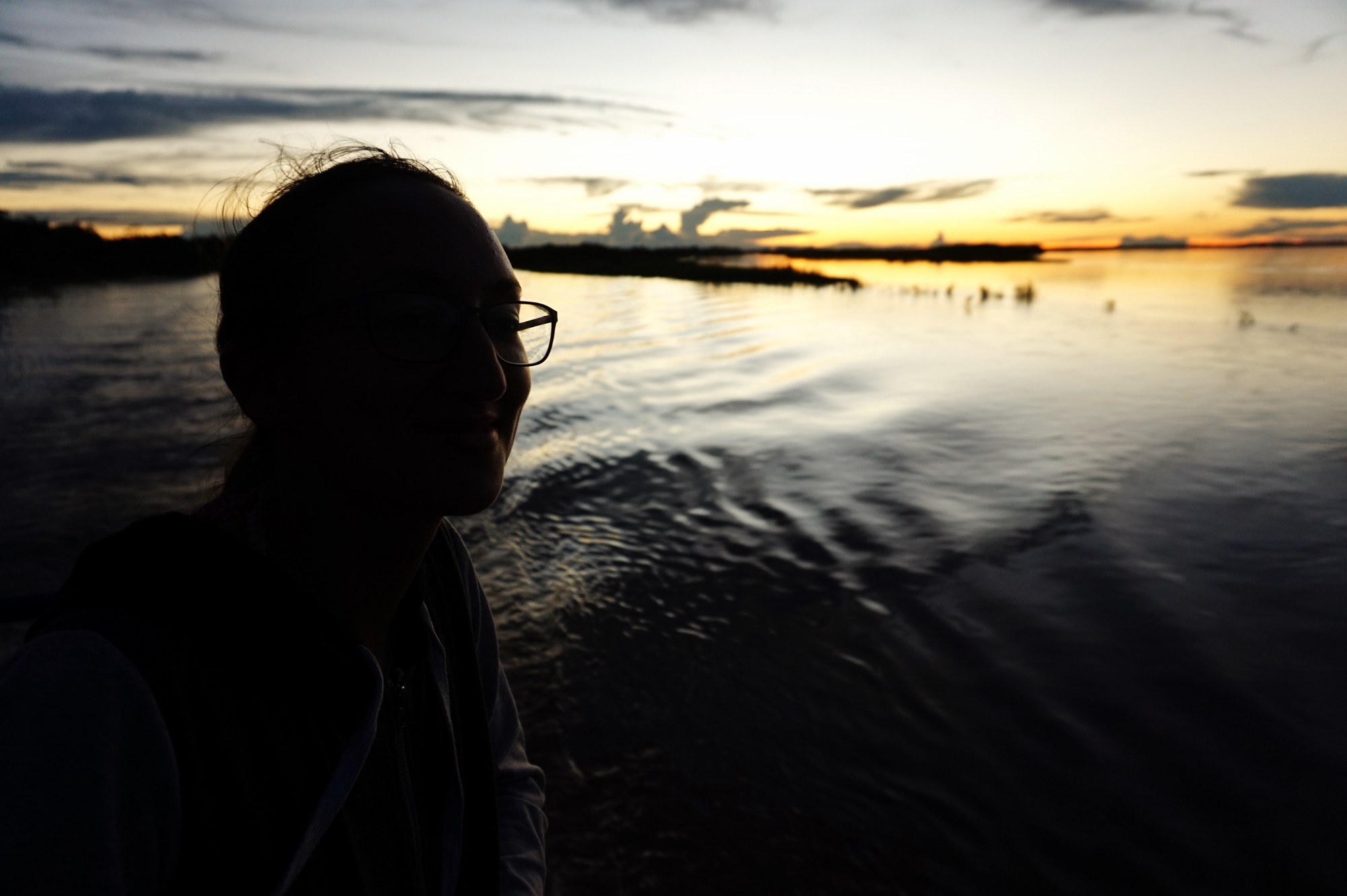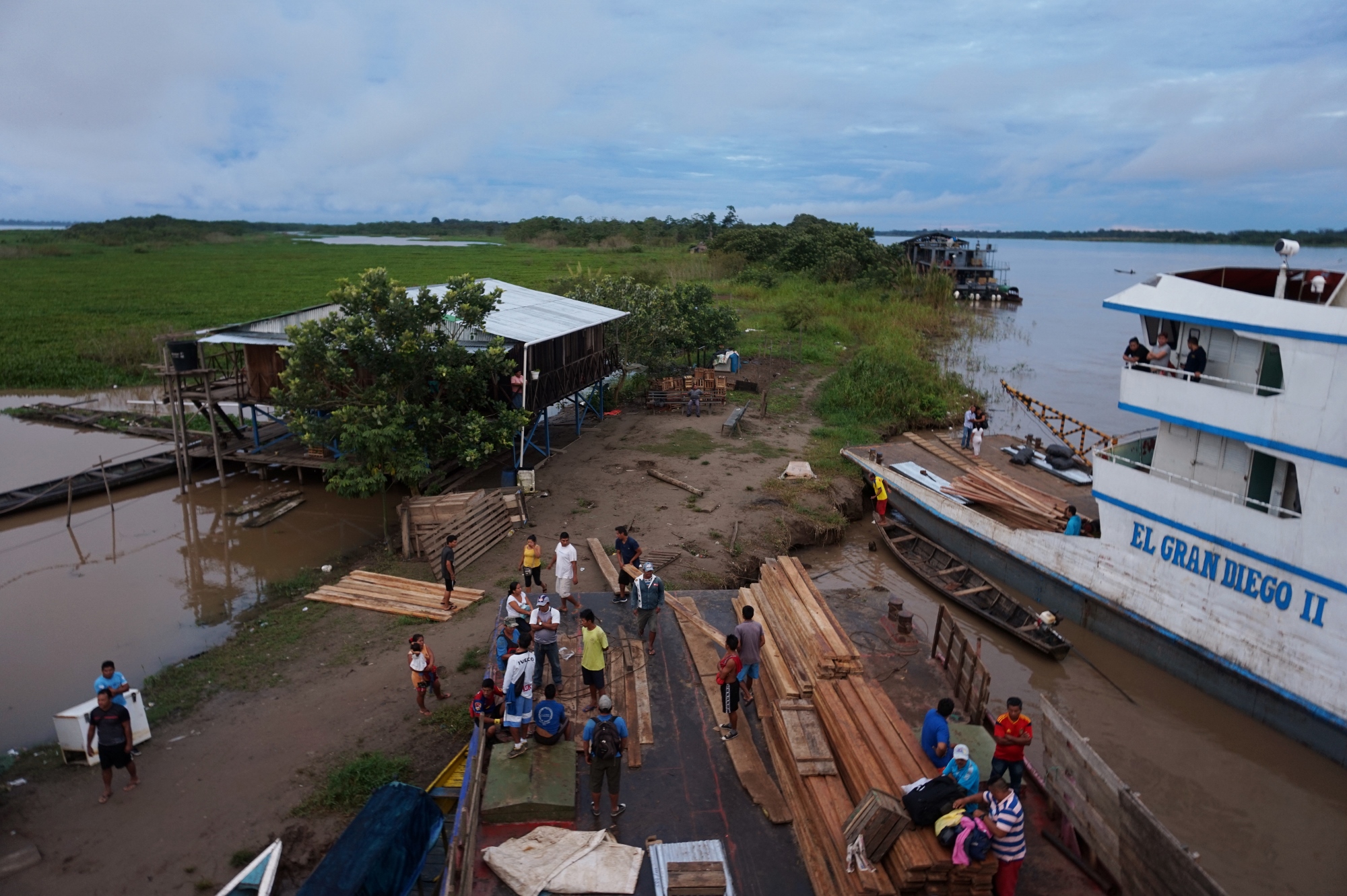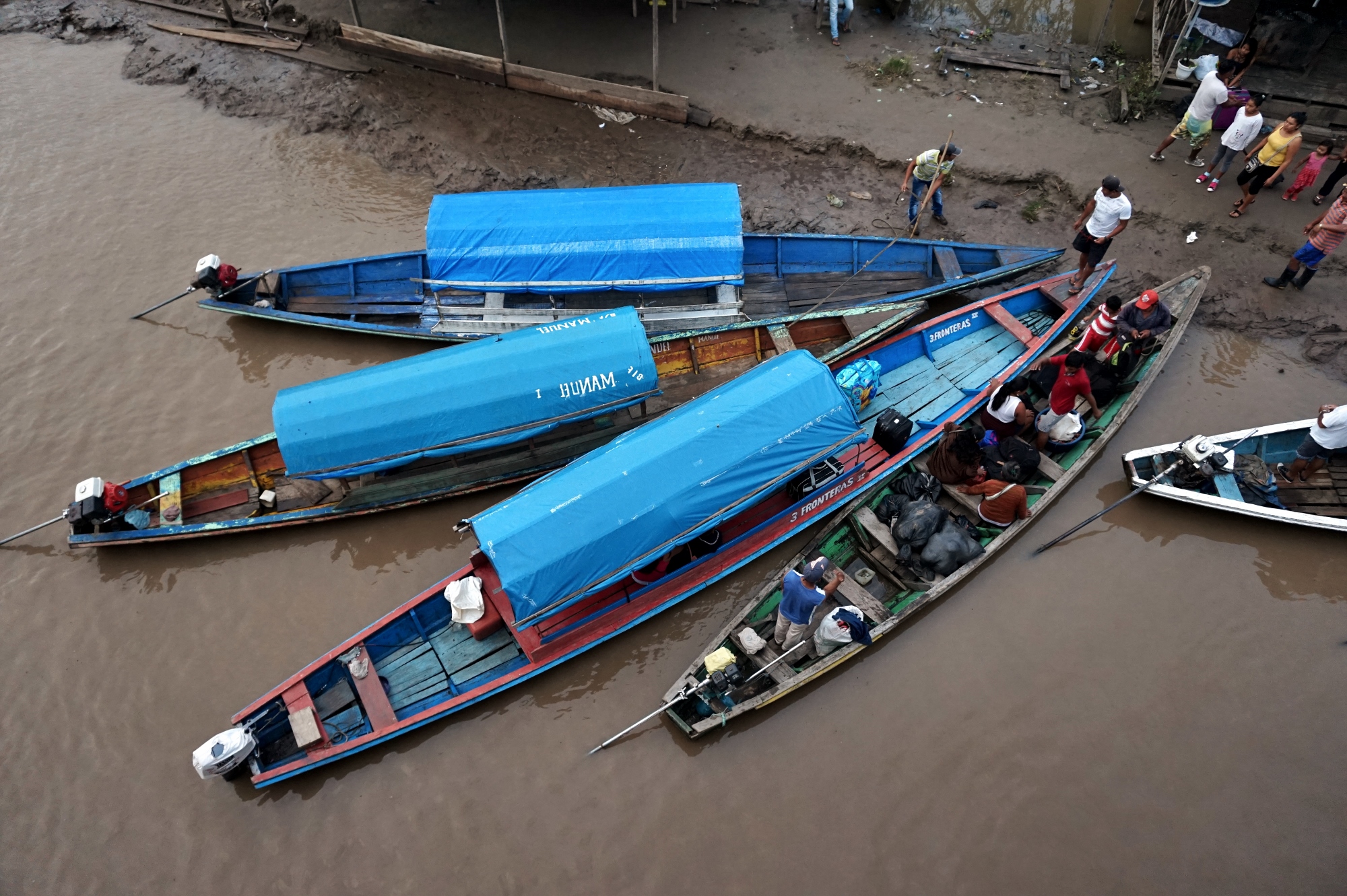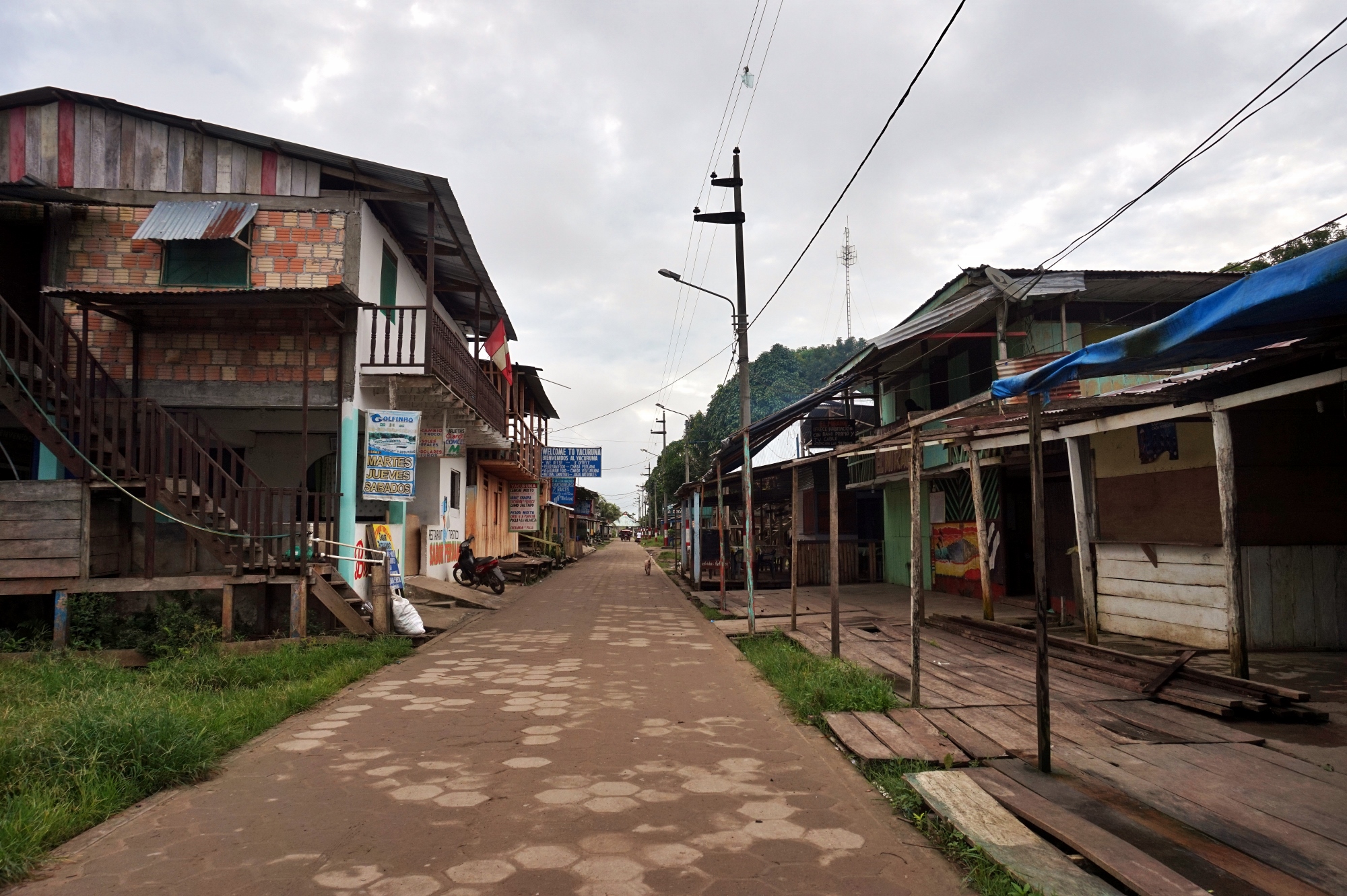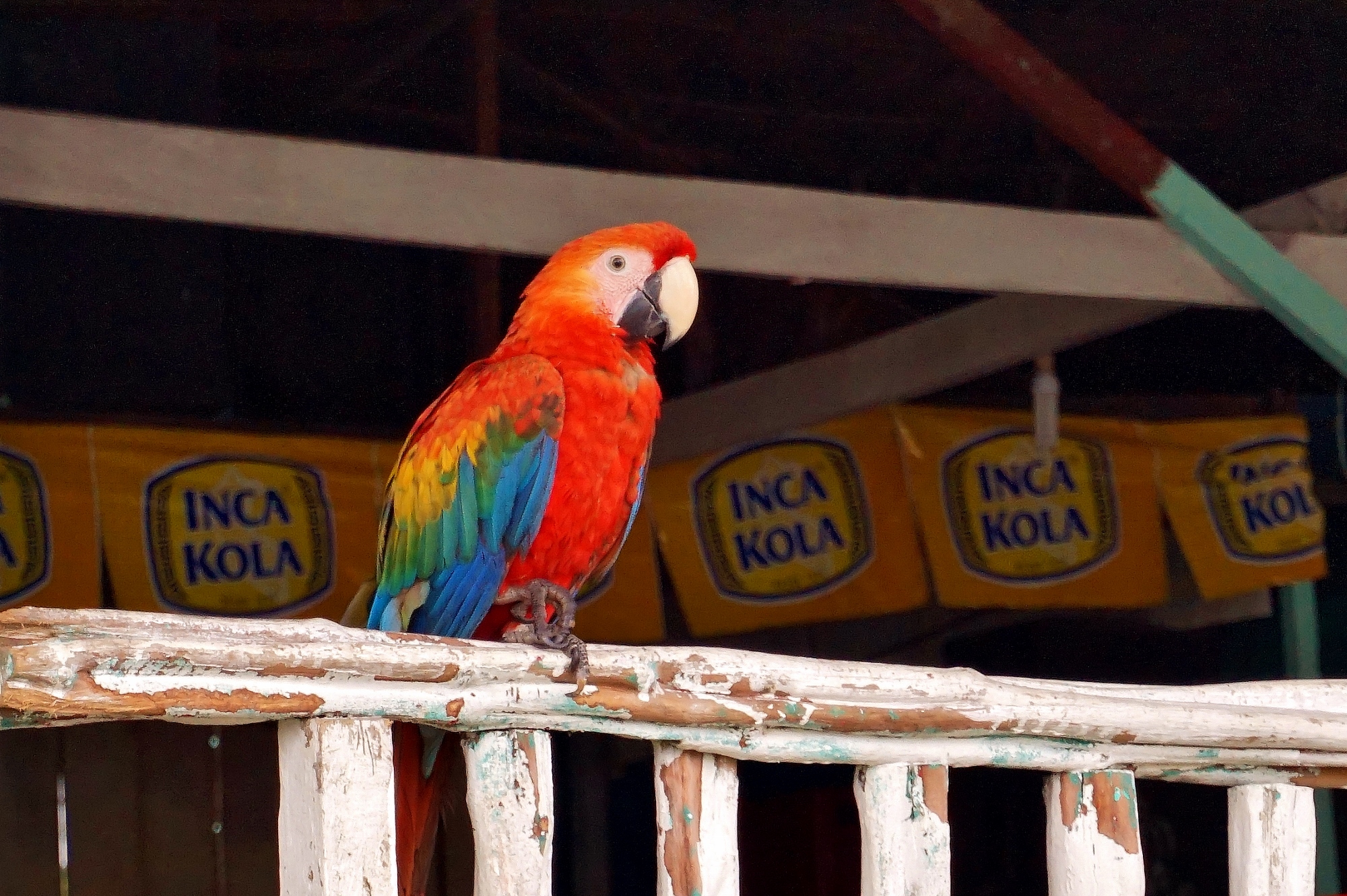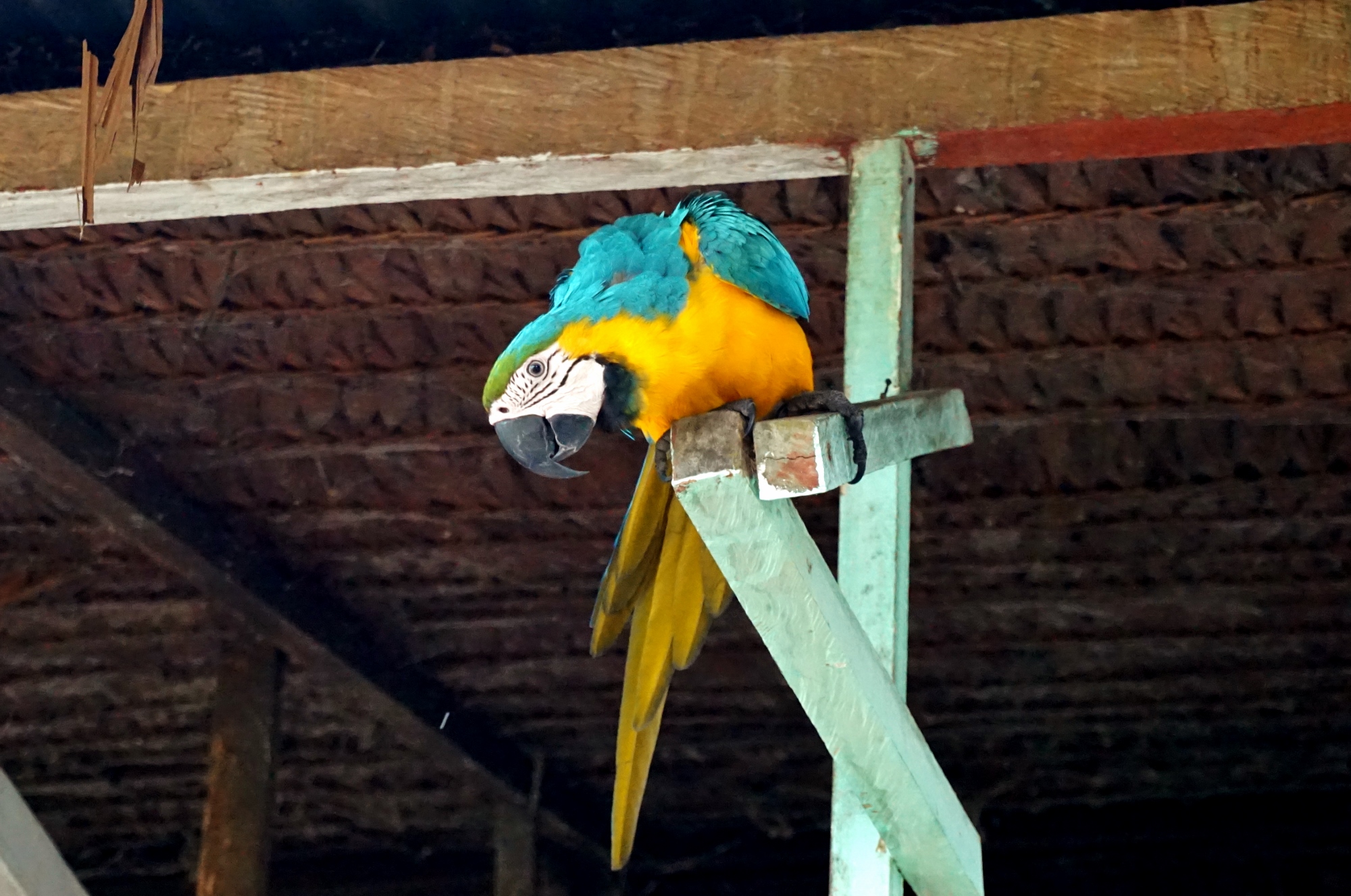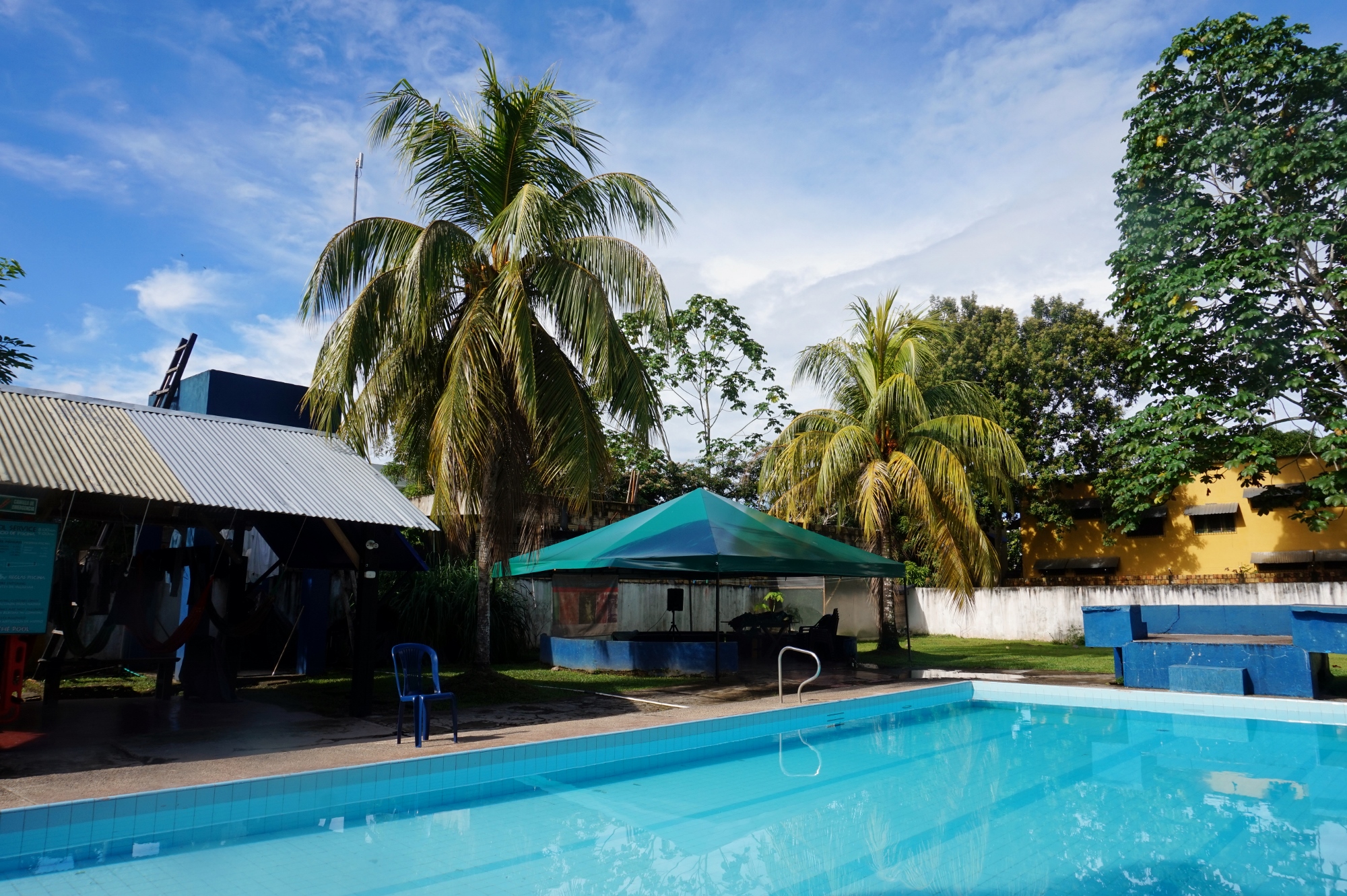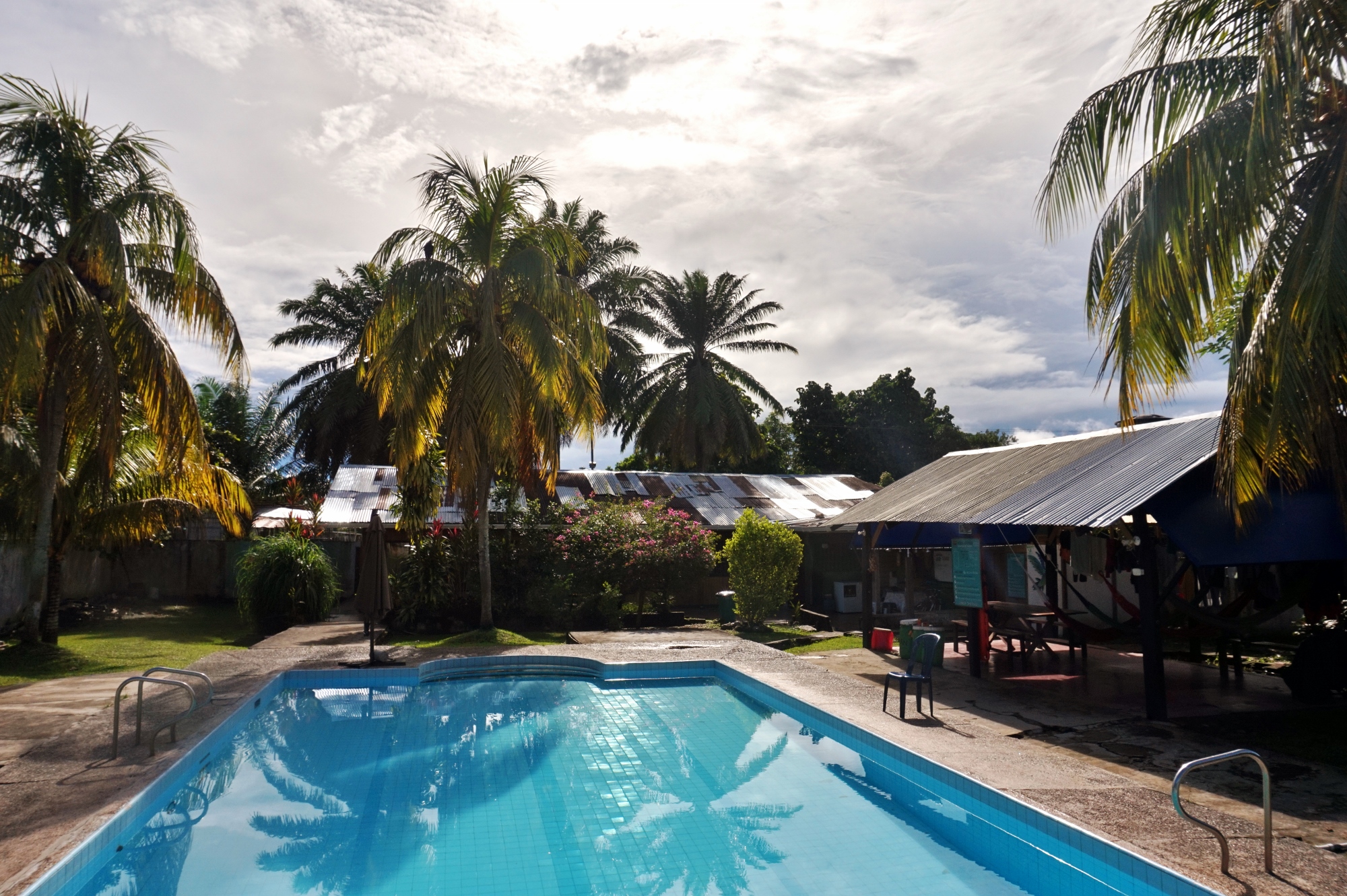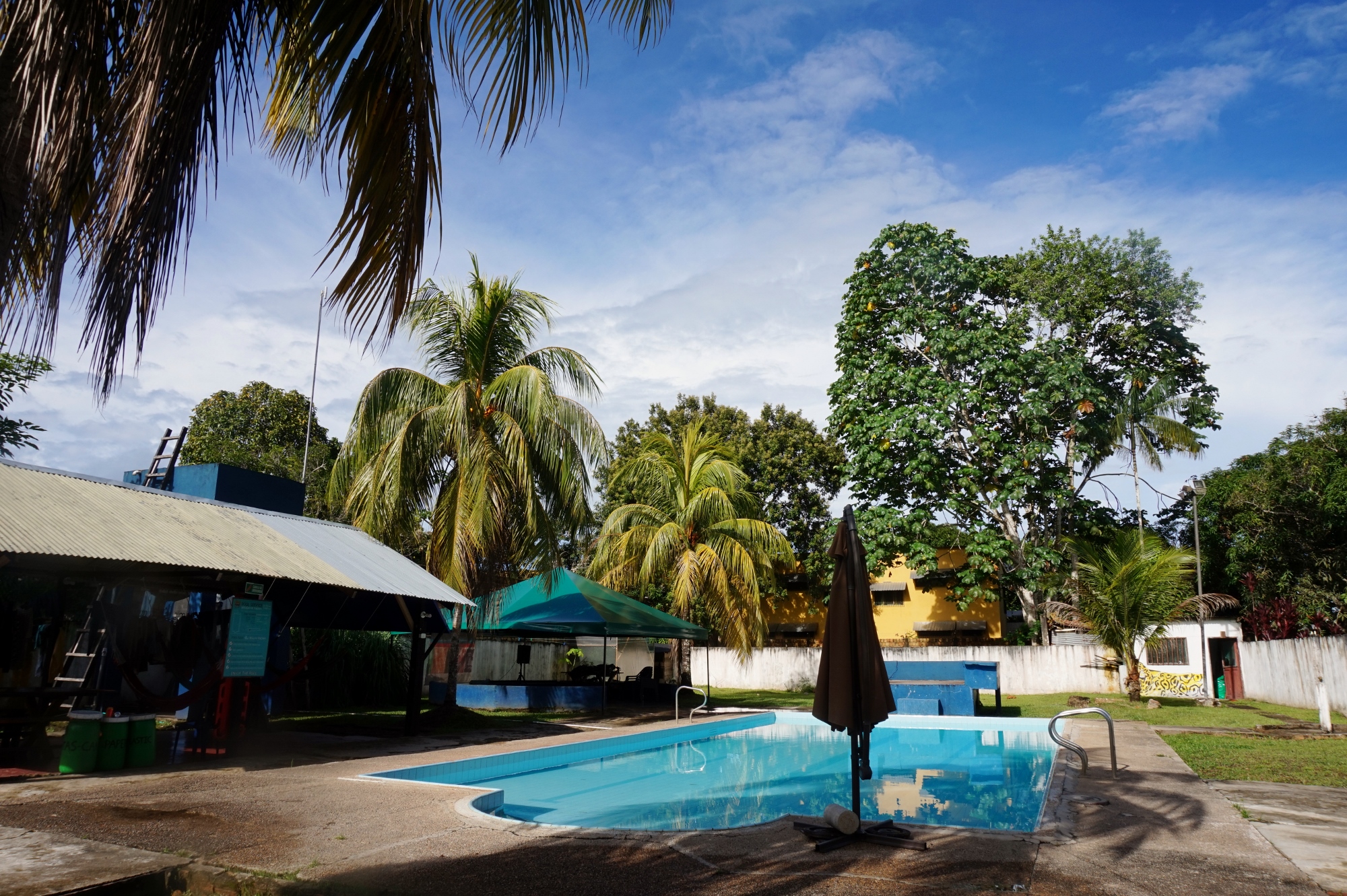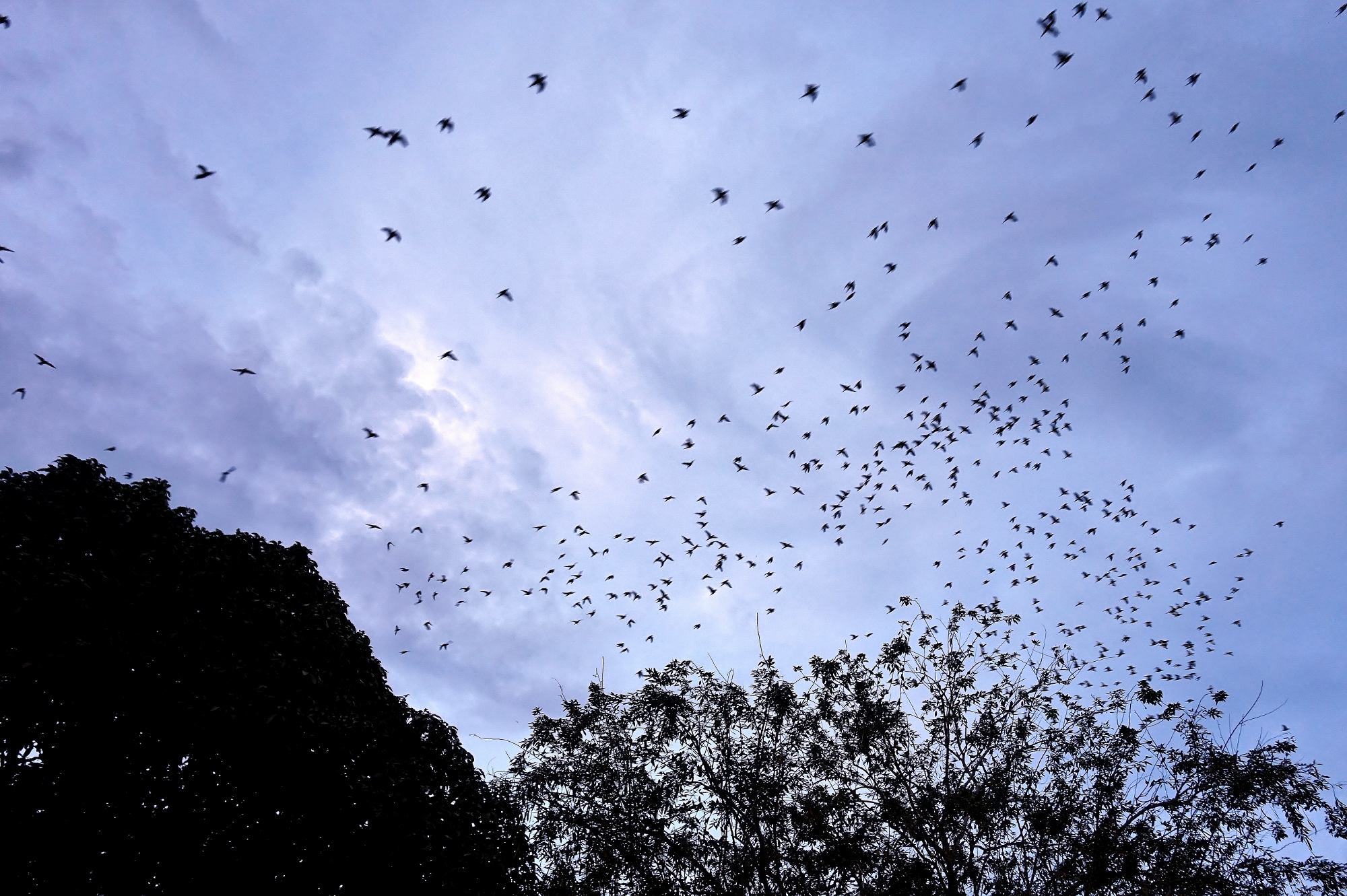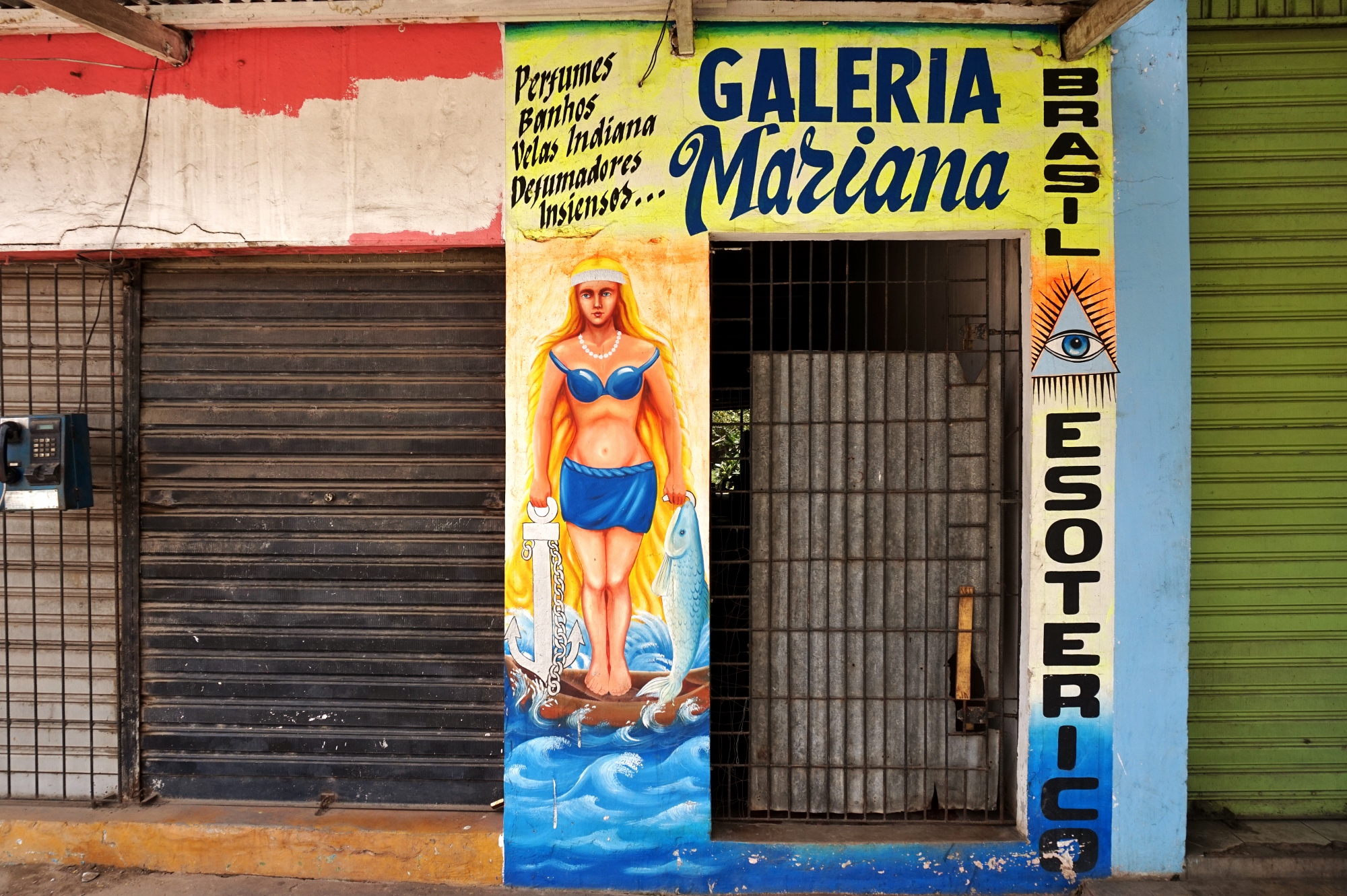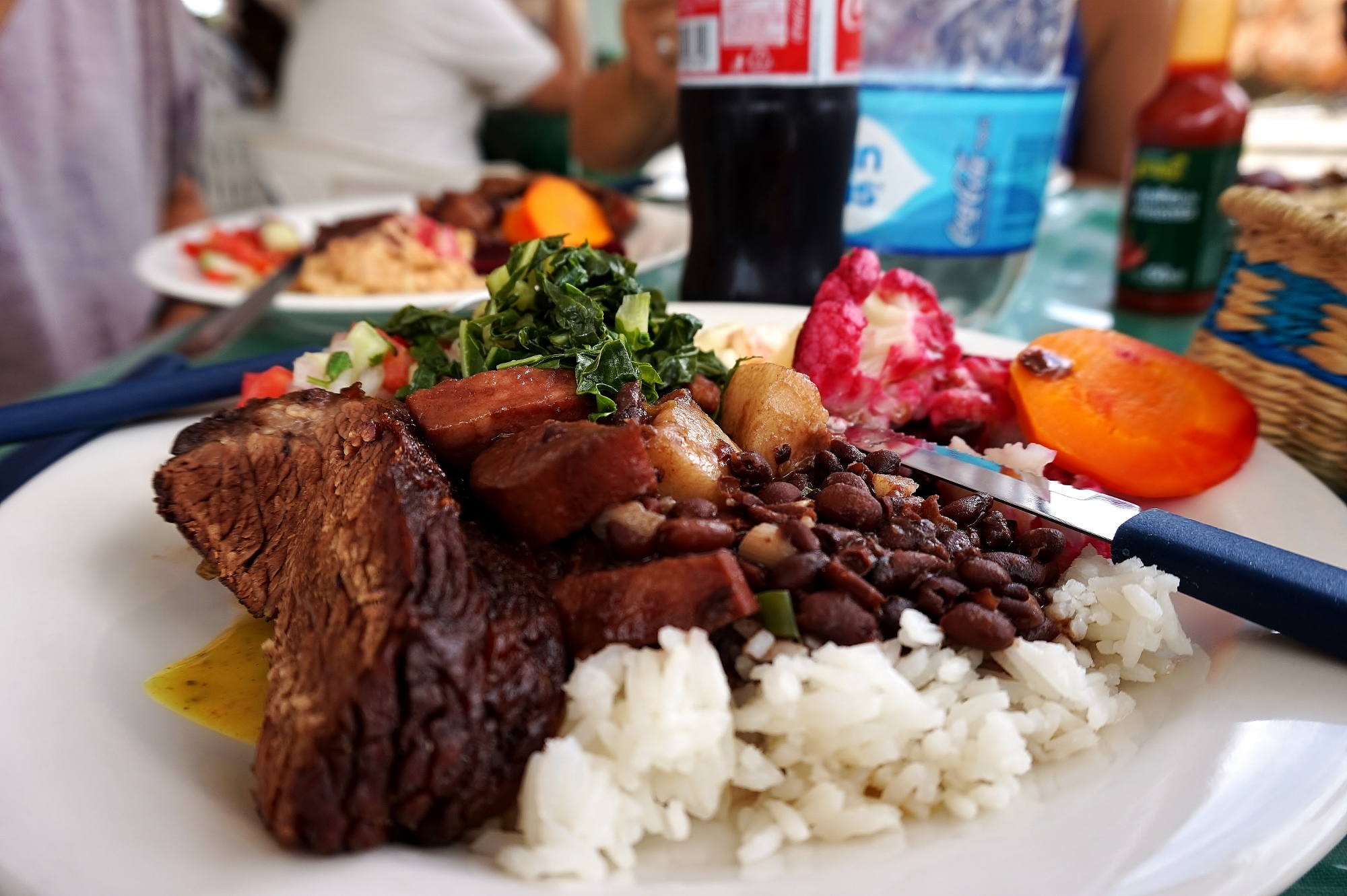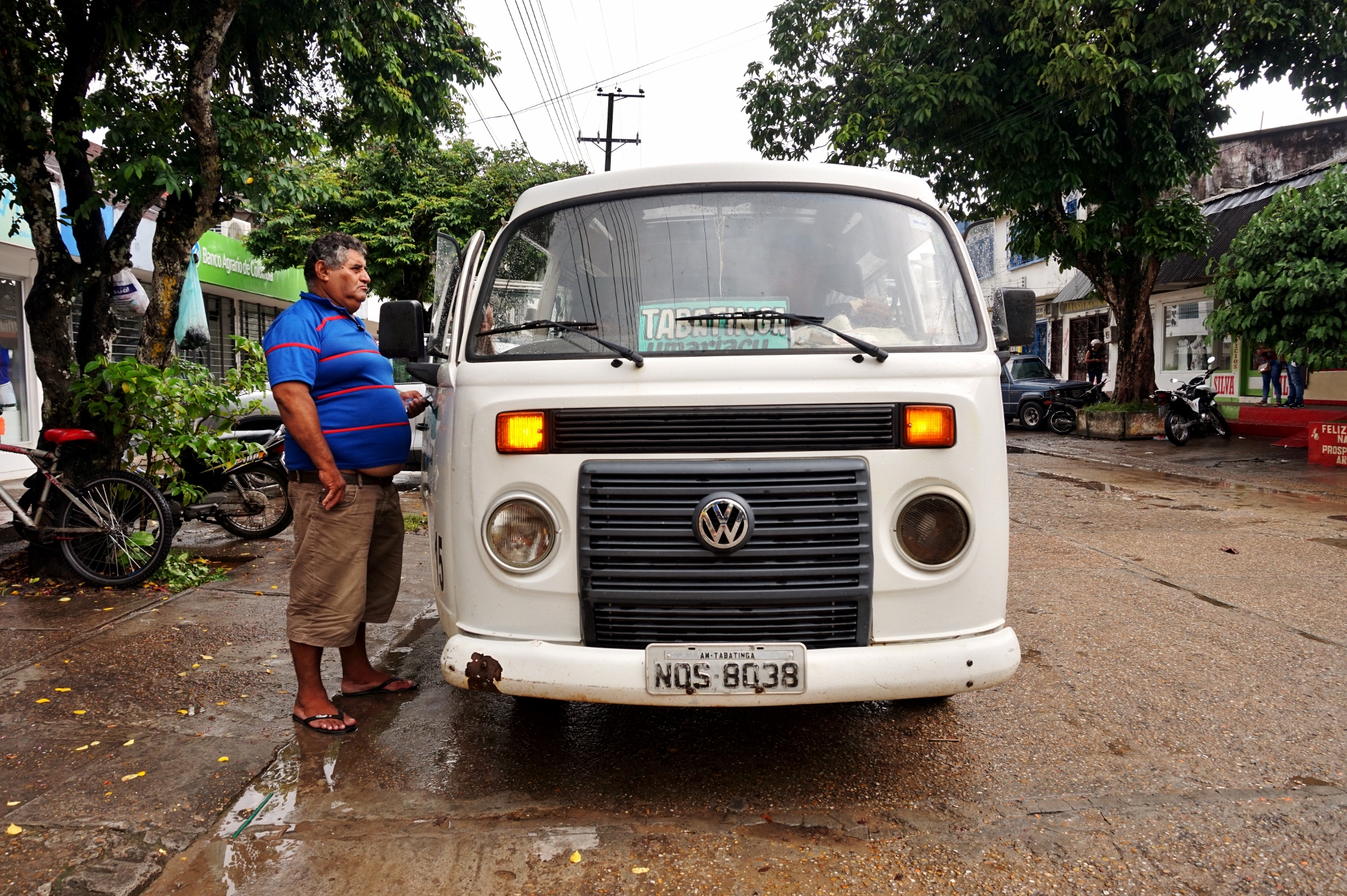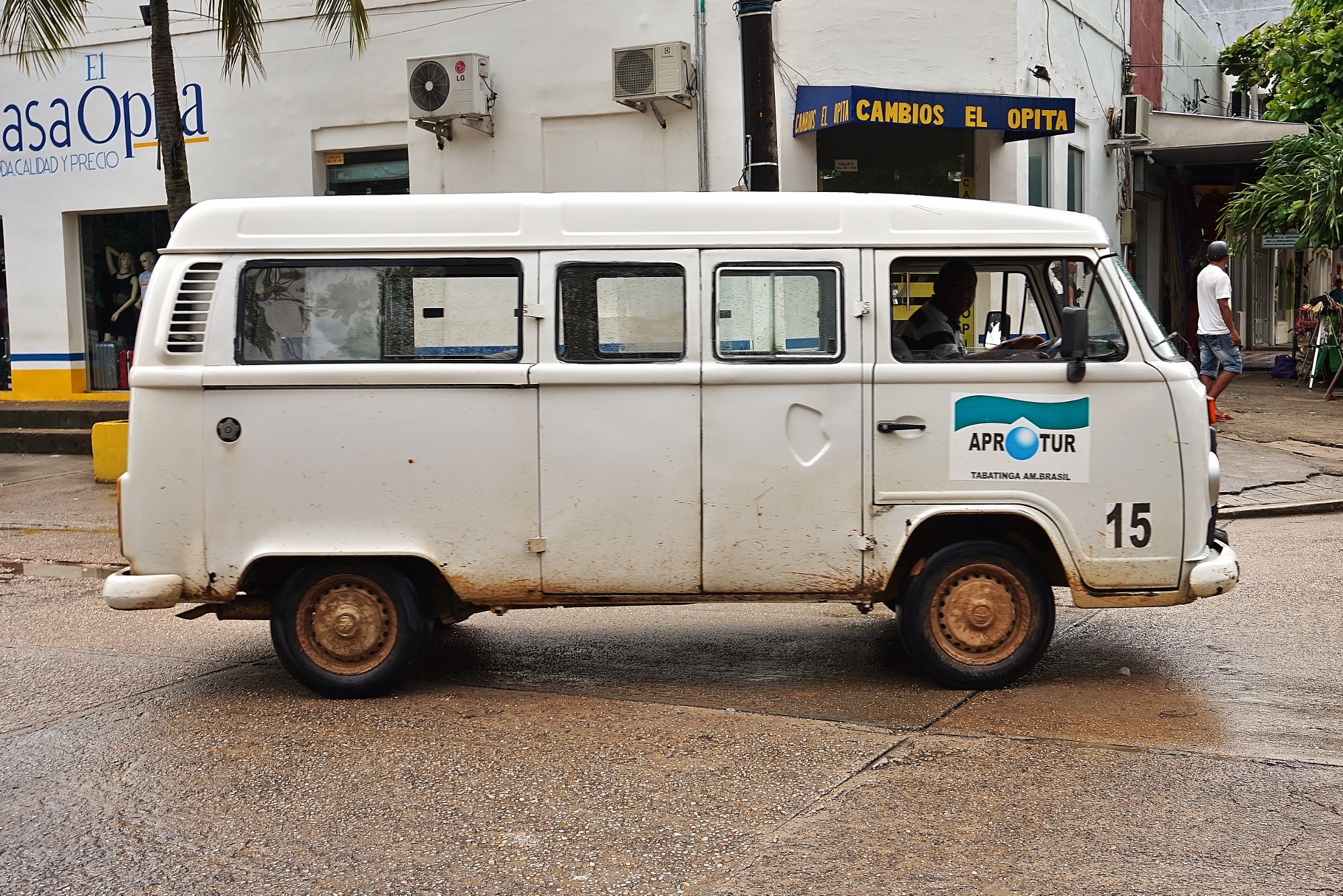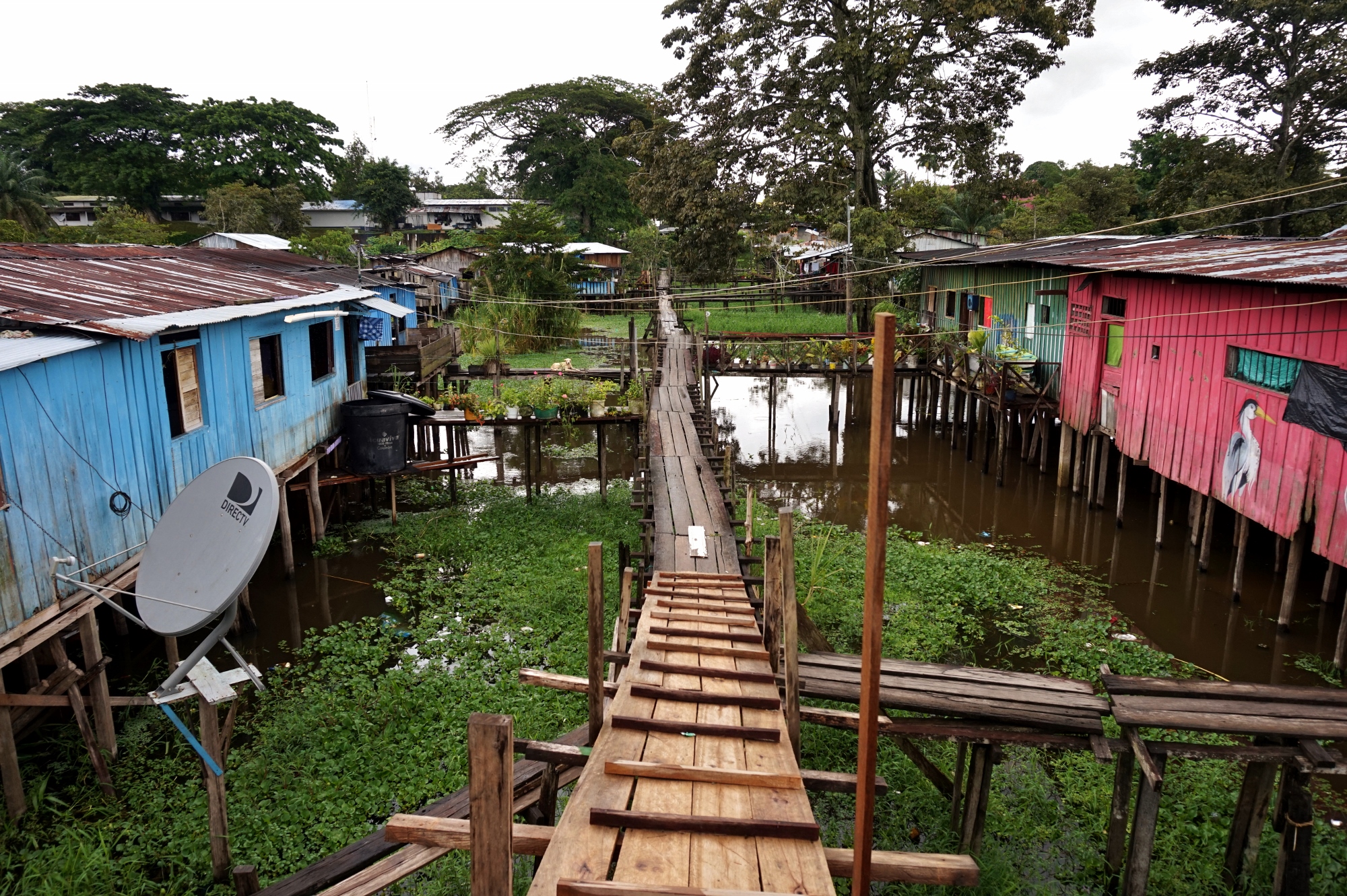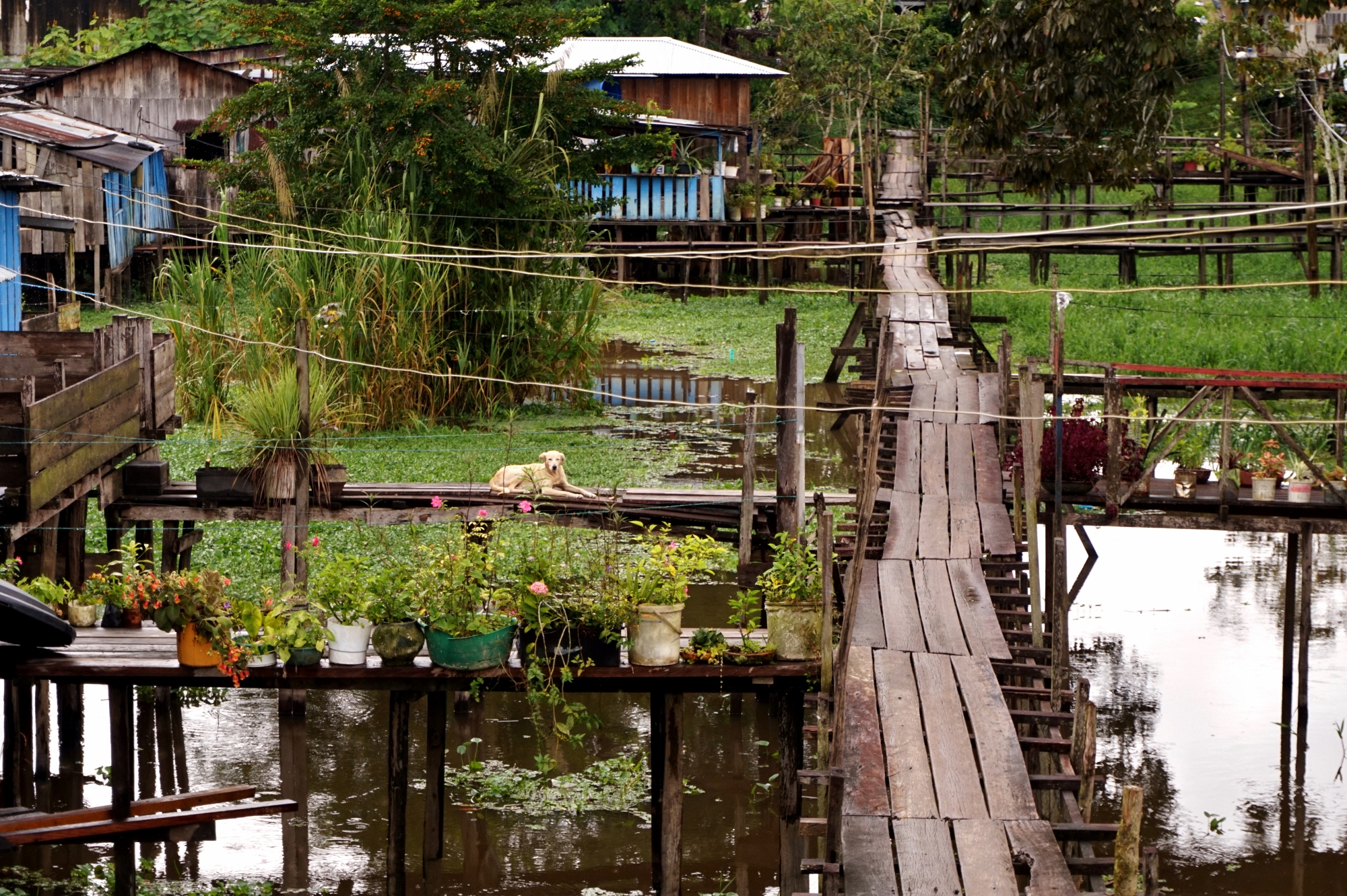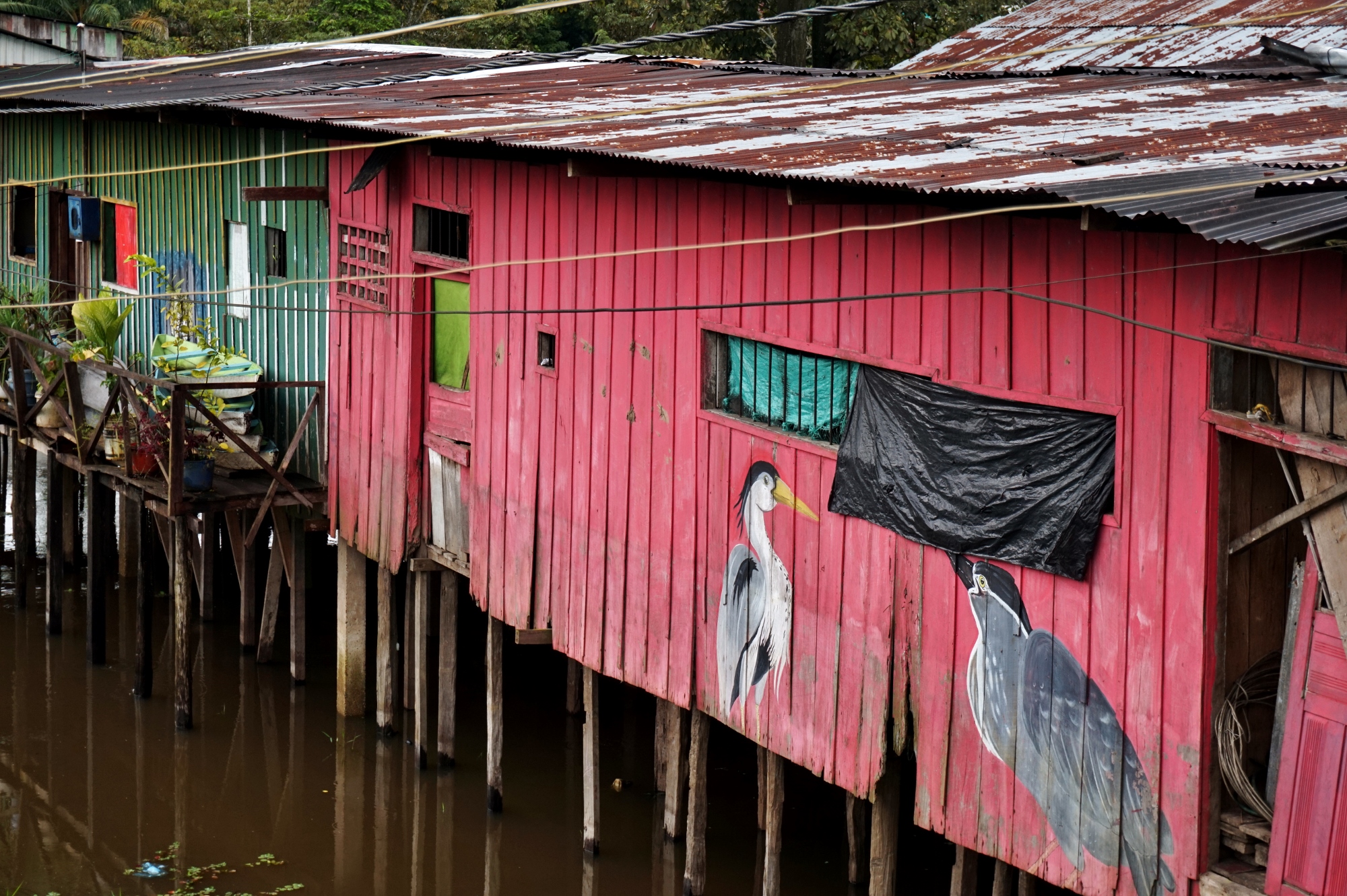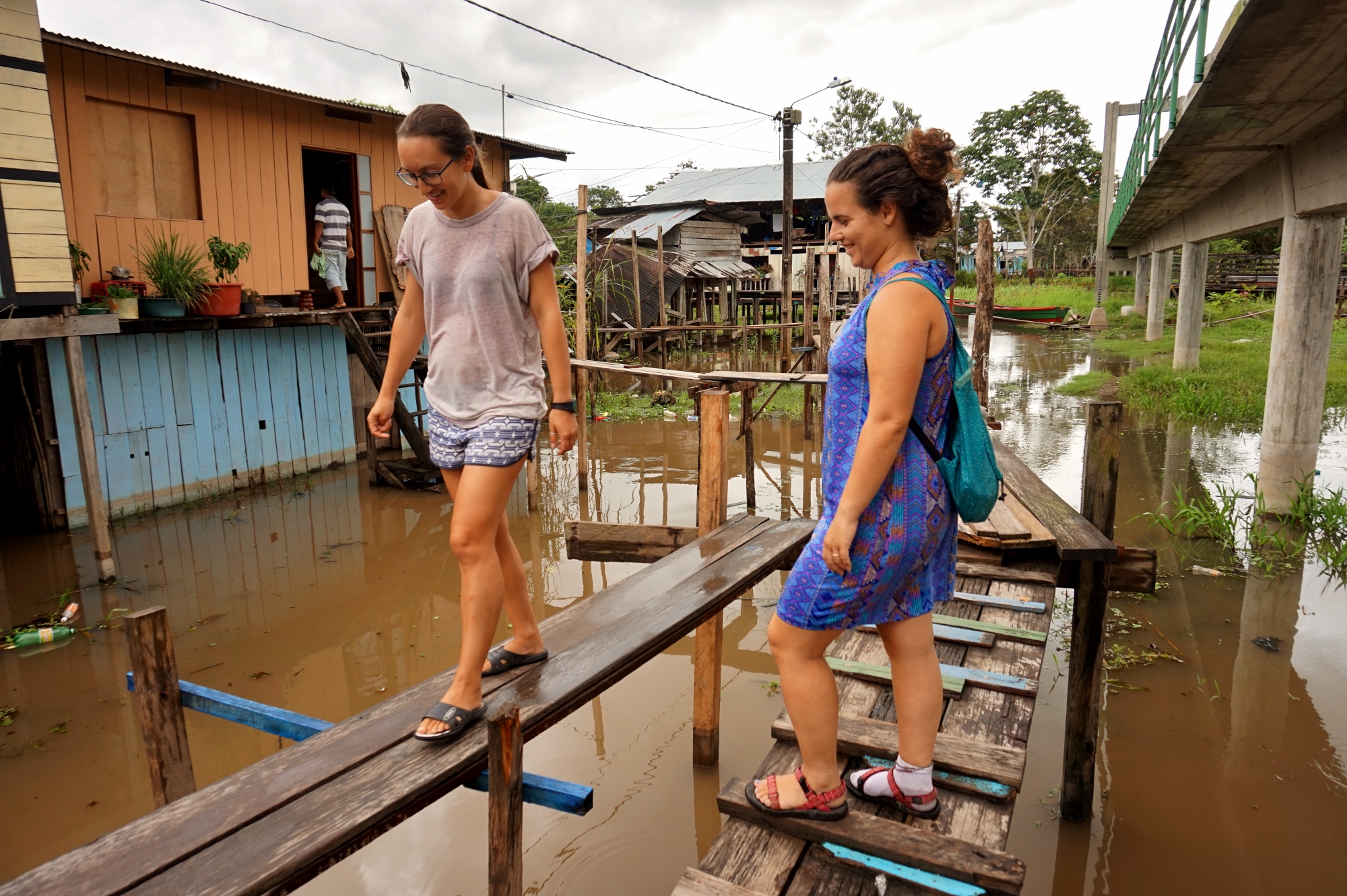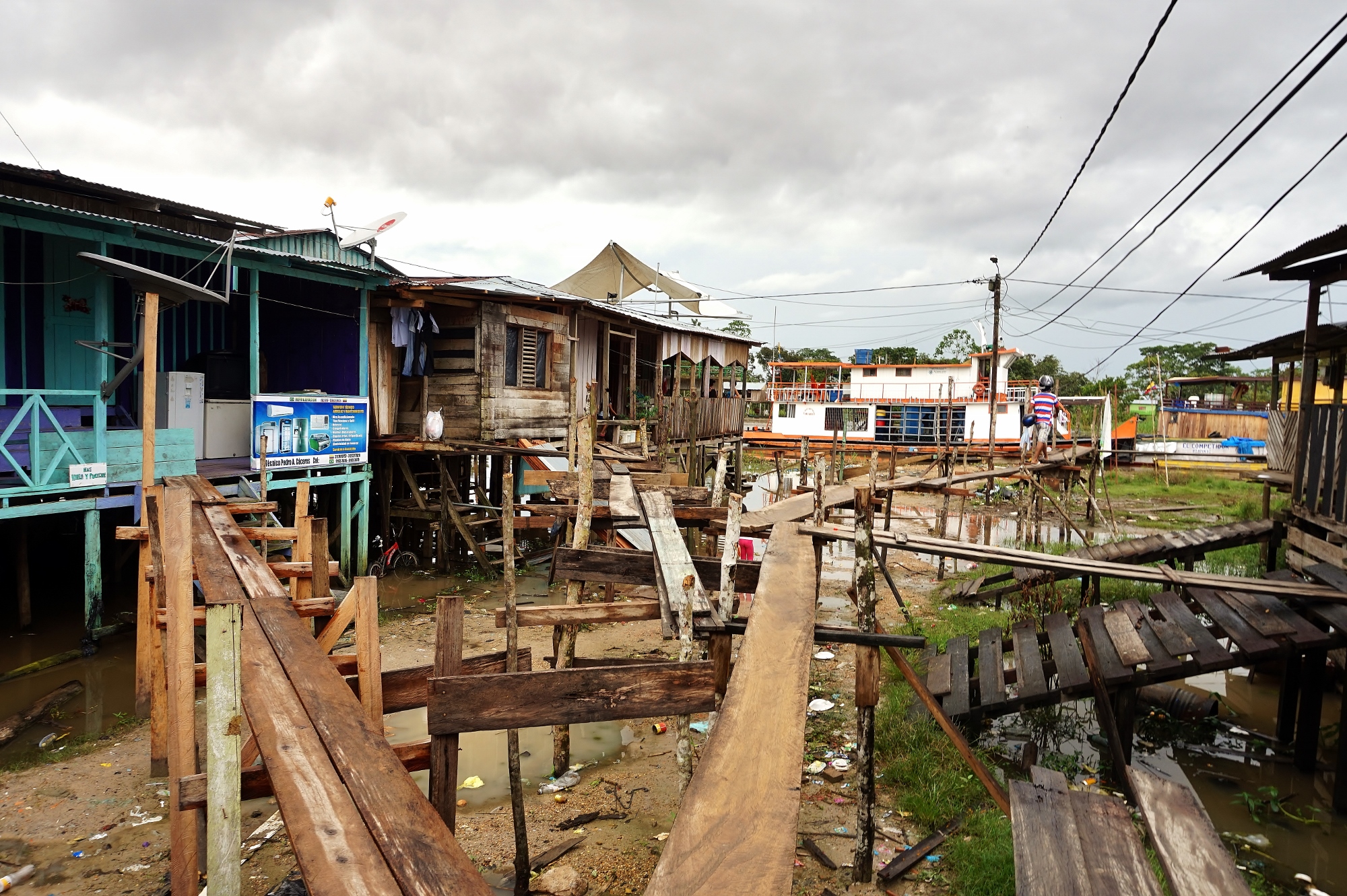THE AMAZON

The Cargo Boat
The port was hectic and fascinating. Massive cargo boats bumped and grinded shoulder to shoulder trying to get their bows into the shallows and their access ramps (a foot wide plank) on to the mud. It was a hive of activity, tuk tuks revved, boats clanged and lorries churned up the mud. A small village built from Coca-Cola bottles, crates of chickens, stacked mattresses, metal roofing, piles of wood, fridges and other white goods and boxes of all shapes and sizes lined the shore and was being dismantled and remantled on the boats. Everything was lugged up by hand using the thin springy planks. I noticed a large pig was also aboard under a metal staircase as well as some pigeons and guinepigs sharing a cage. We sat on the top deck next to the captains quarters, our eyes drinking it all in.
The boat takes two nights and nearly two days to make the journey up the Amazon from Iquitos to Santa Rosa, a small village on an Amazonian island on the border with Brazil and Colombia. All we had to do was pay 60soles (£15) for our ticket and buy a hammock. We had bought a couple in the market near the port earlier that day and already tied them to a nice looking corner of the top deck after we bought our tickets.
The boat left an hour or so late finally leaving the port around 20:45. We played cards for a while with Andy, a nice American chap who is traveling to Colombia to buy a bar. The top deck is least popular as it is a bit more exposed to the elements. The locals chose the enclosed bottom two decks which when I poked my head in were rammed. Hammocks weren't just tightly strung next to each other they were on top of each other like a rudimentary bunk bed. You would have to have a lot of faith in the knotting abilities of the person on top. Luckily a floor above we had more than enough space.
I have never slept properly in a hammock before and I think it was noticeable as I tossed and turned often putting a life saving foot on the metal floor to avoid landing on my arse with an echoing bang, which no doubt would not make us popular with the neighbours. Eventually I got into the SWING of things and found my perfect position, kind of diagonal and slipped into a deep sleep.
We were awoken round 2am to show our tickets. (Why 2am when I only just found my sweet spot god only knows) then again to unload a load of cargo and people at 5am. Breakfast was bread and a cup of porridge. It was surprisingly tasty.
Later in the morning whilst unloading cargo at a small village, a pod of grey and pink dolphins started playing in the engines wake. We assumed it was disturbing the fish giving the dolphins a nice brunch. This was a particularly long stop giving us enough time to catch some good sightings of their pink bodies rolling through the chocolate coloured waters.
Our boat continued on down stream stopping at many of the small communities living on the banks of the Amazon. Each time we stoped a team of deck hands would hurriedly heave bags of fresh produce on to the shore as teams of locals would hurry onboard to sell fresh produce to the passengers. Often the deck hands would form a line, throwing boxes across the deck onto shore or straight into a store. They were very efficient, except when one briefly stepped out of line causing a heavy box of pasta to crash into a helpless looking worker. In the background the villagers and the passengers sat about watching the scene "Coz there's fuck all else to do". A little girl walked along the riverbank twirling an umbrella, another wandered along cuddling a giant cockerel, it's almost as big as her. As we depart a scruffy dog sneaks onboard, a deck hand notices before we are too far from shore and throws it into the river with a yelp. The startled dog quickly swims back, luckily no anacondas were near by.
Lunch was chicken and rice in a fairly bland sauce. Good job I have been carrying a jar of seasoning since Chile for this very moment.
There was something I couldn't put my finger on about this boat. It had a religious statement about Israel on the front that I couldn't make head nor tail of, our ticket was sold to us by a fantastic looking old man dressed in robes and a white shawl and you couldn't buy beer (This was probably the main thing that bothered me).
I wanted to know why. Luckily my prayers were answered when we pulled over to a very interesting village. The people who live here call them selves the Lost Israelites (officially Asociación Evangélica de la Misión Israelita del Nuevo Pacto Universal... catchy). Founded in 1958 by Ezequiel Gamonal, a shoemaker from a small Peruvian village.
The Peruvian cobbler proclaimed that he had been chosen by God to build a new Israel in the Amazon rainforest – and some of his countrymen answered his call. Men and women from all over Peru left their homes and businesses, flocking to Gamonal’s self-styled New Promised Land in the tropical forest. Like modern-day Jews and Seventh-Day Adventists, Gamonal’s Lost Israelites observe the Sabbath – the traditional day of rest – on Saturday, but do not celebrate Christmas or Easter, and do not display crosses or images of saints. The sect members strictly follow the Ten Commandments, which they refer to as the Royal Law; a large copy of the holy Decalogue is displayed along with a small ark in the sanctuary of the congregation. In line with Israelite traditions, men grow out their hair and beards while women keep their tresses covered with kerchiefs.
© Stan Raucher
A couple of wise looking men shuffle onboard in full robes, with tied up long grey hair holding large canes. They disappear into the cargo hold. I was eager to see what they emerged with, something religious perhaps? They reappear with a black restaurant 'A' board with the days discount menu scrawled on it in chalk.
As we leave I noticed out on deck our favourite robed old man who sold us out tickets is conducting the boat like an orchestra. His arms wave in dramatic fashion towards the captains bridge as he signals where the boat needs to dock next and what cargo needs to be prepared. He actually looks quite mighty, like Gandalf's long lost brother.
I was awoken late afternoon by some commotion at the front of the boat. I opened one eye and realised we had stopped again. I looked over the side to see what looked like a tug of war going on. Two guys suddenly disappeared into a clump of reeds followed by the sounds of a distressed cow. I walked up to the front deck and saw that the team of deck hands had the cow tied by the horns and were trying to pull it up onto the deck. The cow looked really frightened as it tried to free itself, kicking and charging. The whole scene was quite surreal and at times dangerous. They eventually got it up onto the deck and it careered into a stack of Inca Kola. Eventually it calmed down and was tied up in a makeshift pen under the stairs. The boat continued to stop at two more farms to collect cattle, each time drawing a crowd of onlookers from the top decks. I think deep down we all were rooting for the cows as it looked pretty horrible for them.
Around dusk Andy cracked open a bottle of Pisco and we watched the sun set over the Amazon. It was a good one.
Santa Rosa
We arrived in the Peruvian border town of Santa Rosa at dawn and dodged the cows and cargo as we disembarked and tried to get our bearings. Santa Rosa is an odd place with a rustic charm. We shared a boat with a couple from the boat to the immigration office which wasn't open for two more hours. We waited it out in a wooden tin roofed cafe partly jutting over the swollen river.
We sat next to a fiery ginger haired German. He was wearing a sweaty white vest with a hole at the belly button and had a plaster on his forehead. He said he had escaped from prison a few years ago in Germany after laying low in South America for nearly ten years. Apparently he was tricked into returning to Germany then had to serve the rest of his sentence (6 years total), he just got out. When I asked what he did here for ten years he laughed and said "what everybody does... Cocaine!"
He also spent a long time as an opium dealer in Colombia. After a long stint away, he is killing time waiting for his entrance visa to be granted by hopping between the three frontier towns. To be honest it was still only 6am and too early for such a conversation. But that's border towns for you.
We took breakfast in the little market next to immigration then stamped out of Peru and took our long tail boat over the Amazon to the Colombian town of Leticia.
Leticia
Leticia is a pretty little place and the biggest of the three frontier towns. It's a ten minute boat across the river from Santa Rosa and a fifteen minute walk down the main road to Brazil. We checked into a hostel with a pool! This we realised was our first pool of the trip.
We didn't really do much till the evening other than swim and doze. We did venture out for lunch down a little side street. Whilst walking down one street we passed some builders working away. We kept hearing wolf whistles. H and Camillia shot round and gave them a dirty look. The whistles continued then suddenly we realised it was the call of a bird that lives in this area.
One thing you must do if you visit Leticia is head to the main square round sunset. The trees there are home to thousands and thousands of parakeets that fly back to the square at sunset. It's an incredible sight as they create a morphing black cloud in the sky constantly growing and shrinking like a windows 90s screensaver. They also make a monumental racquet. I still to this day don't know how we walked away shit free, only with a few green feathers to brush off our shoulders.
After breakfast in Santa Rosa Peru, lunch in a back street in Colombia's Leticia it only seemed fitting to have dinner in Brazil's Tabatinga. Plus Andy was dying for Brazilian food, and had been fantasising about it since we met him on the cargo boat.. We found a couple of make shift BBQ restaurants down a side road and grabbed a seat. The marinade was incredible. We washed it down with a couple of strong caipirinhas, (Brazil's national cocktail) in a roadside bar, then walked back into Colombia. Fuelled by cocktails we thought it would be a good idea to take a boat over to Santa Rosa to see if there was much happening there. It turned out there wasn't, just one club with a hand full of people inside. We had a few beers then headed back across the river at round 1am. My final memory is drinking a shot of Aguardiente (Columbias national spirit) in some warehouse bar near Leticia's docks. Three country pub crawl - done.
With a very heavy head we packed up and checked out. We headed back to Brazil again for breakfast / lunch and found a typical Brazilian Kilo restaurant where you pay depending on the weight. This was thoroughly needed to quash the hangovers. We pigged out of feijoada, plantain, beef brisket, veg and salad. It did the trick and soon we were all feeling like our old selves only a tad heavier.
One thing I never did when we were in Brazil a few months ago was have a ride in the traditional VW vans that a really popular. Luckily I spotted one being used as a collectivo back to Leticia. We hopped in and headed back into Columbia for the final time.
It dropped us off by the docks so we followed the riverside back to our hostel to collect our stuff. We had to balance our way across the raised walkways of the stilted community perched on the bank to get back to shore.
Next stop Bogota, Columbia's capital in the mountains.

